
- Cultural Travel

Cultural conscious traveling and how to understand cultures

To be a conscious traveler it is important to understand and respect the culture. When you travel you will learn so much about the culture of the place especially if you engage with locals. There are a few technical frameworks that can help you to understand cultures.
This blog post gives a theoretical overview of understanding cultures and my personal travel stories related to culture. In the end, you have a clear picture of the dimension from which countries to countries differ.
Table of Contents
What is culture
The Merriam-Webster dictionary has the following two definitions of culture: “ the customary beliefs, social forms, and material traits of a racial, religious, or social group ” and “the set of shared attitudes, values, goals, and practices that characterizes an institution or organization “.
Mainly culture means the shared beliefs, and values, behavior of a group of people. It doesn’t imply that a certain country has a particular culture. Diverse cultures can be found within one country.
Chad is the most cultural country in the world. The north-central African nation has 8.6 million residents and more than 100 ethnic groups. Argentina, on the other hand, is considered one of the least culturally diverse countries. 97 % speak Spanish in Argentina.

Cultural Dimensions Models
The cultural dimension models are theoretical frameworks to divine cultures, behaviors, values, and much more of a specific culture. There are two main models you can learn about in this post. Those models I have learned during my studies in the intercultural communication course.
Cultural dimensions by Hofstede
The six cultural dimensions by Hofstede is a model to understand cultures. Mainly used in the workplace. Very helpful if you move abroad to work in a different country. But it also shows how society in general is behaving. Maybe you can use it even to decide which country you want to explore more.
Power Distance
The first dimension is the Power Distance , which indicates the hierarchy level and distribution of power within an organization. A high-power index shows strong hierarchies in which everyone has a place. A low power index shows equal distribution of power and low hierarchy levels.
A practical example is that children in a country with a low power index are talking back to their parents, whereas in countries with a high-power index that is something very unusual. The country with a very low power index is Austria. On the opposite side with a high score is Malaysia.
Individualism vs Collectivism
The next dimension is Individualism vs Collectivism . Individualism refers to achieving your own goals, looking after close family, stand up for individual rights. Collectivism means that in a society people look after each other, the We is more important than the I, the people are considered very loyal to the community.
A recent example of Qatar, although this topic is huge, I’m only going to talk about individualism and collectivism. The world cup is held in a Muslim country where collectivism is ranging high. Visitors from different countries come to visit. It is important for a visitor to understand and respect the culture. This theoretical approach can help to understand the culture better. Hassan Al-Thawadi explains it very well in the interview here , at minute 13:00. Community values, in this case very strongly connected with religion have a higher importance than individual values.
Masculinity vs Feminininty
Masculinity vs Femininity is the next dimension. A feminine civilization prioritizes cooperation, nurturing, and quality of life while a masculine society encourages assertiveness, courage, strength, and competition. A high score for femininity in a society means that feminine gender roles are important, whereas a low score means females are often found in leadership positions showcasing masculine traits.
A good example of that is Sweden, where also fathers are entitled to have the same days of parental leave as mothers. In contrast, in Japan, children are confronted with the competition and achievement-oriented values of society, at school.
Uncertainty avoidance
Uncertainty avoidance indicates how well a society copes with anxiety, the openness to new things and change and the risk in order to make a change. A high index of uncertainty avoidance indicates low tolerance for uncertainty and risk-taking. Whereas a low uncertainty avoidance score stands for the acceptance of the unknown is accepted and a high tolerance for change.
Greece has a very high index and Singapore has a very low index. A good practical example would be if a teacher doesn’t know the answer to students’ questions it is more acceptable for students of low uncertainty avoidance countries. But also, how a country or an individual person of a country perceives changes. Those with a high uncertainty avoidance rather stick to how things were done in the past while low-score countries drive for changes.
Long-term vs Short-term orientation
Long-term vs Short-term orientation represents how countries link to their past and deal with challenges in the present. Countries with a short-term focus defend long-standing traditions and conventions and view societal change with skepticism. While long-term-oriented countries have a more pragmatic approach and focus on the future. Some of its characteristics include the ability to adapt, long-term growth, thrift, saving, and tenacity.
Asian countries are strongly long-term oriented countries, such as China, South Korea and Japan. While Ghana has one of the lowest scores when it comes to a long-term orientation. A short-term orientation has also Nigeria, United Arab Emirates and the United States.

Indulgence vs. Restraint
The final dimension is Indulgence vs. Restraint , which determines a society’s ability and inclination to satisfy its needs. Indulgence stands for free satisfaction, basic human urges to enjoy life and have fun are important and socially allowed. Countries of restraint suppress the satisfaction of needs. There are strict social norms and a low value placed on leisure.
The people within the indulgence nations tend to buy more luxurious goods, in contrast to restrained countries where money is more spent on basic goods. Denmark’s society is considered indulgent and Egypt has a very restrained society.
Sources: https://www.hofstede-insights.com/fi/product/compare-countries/ https://www.simplypsychology.org/hofstedes-cultural-dimensions-theory.html https://www.hofstede-insights.com/models/national-culture/
Cultural Types by Lewis – Understanding countries’ culture
The cultural model developed by Richard D. Lewis is based on nationality, religion and behavior. The typology is divided into three categories: Linear-active, Multi-active and Reactive .

The characteristics of the linear-active category are talking half of the time, being job-oriented, polite but direct, limited body language, and truth over diplomacy. Countries in that category are Germany, Switzerland, Luxembourg, USA and Norway
Some traits of the multi-active category are talking most of the time, being emotional, impatient, people-oriented, and flexible truth. Some countries in that category are Mexico, Italy, Colombia and Spain.
Characteristics of the reactive group are listening most of the time, being polite, indirect, never confronting, diplomacy over truth, patience, and subtle body language. Some countries in that category are Vietnam, Japan, China, Taiwan and Hongkong.
Sources: https://redtangerine.org/agile-around-the-world/ https://magnussonllc.files.wordpress.com/2011/01/lewis2.jpg https://www.crossculture.com/the-lewis-model-dimensions-of-behaviour/
16 Personalities Countries assessment
You may be familiar with the 16 personality traits. The great thing is that there is even a country rating where you can see what makes up the majority of a country’s personality .
Looking through your cultural glasses
You wear them, the glasses, how you see the world, a certain culture and behavior are disrespectful in your eyes, while it is tolerated in the eyes of others. You see the world through cultural glasses .
I’m an observer, I love observing the behavior of people in the cultural context and discovering differences from what I’m familiar with. My observant nature and inquisitive mind have provided me with some of my fondest travel memories. For example, when I was sitting in a kitchen talking to Tanzanians about their worldview and the changes in their country throughout history. Here are some of my learnings during the travels that let me understand cultural differences better:

Showing affection public in different countries
While living in Tanzania I learned a lot about this very different culture from what I have known. In Tanzania, you can’t see couples showing affection in public. Not even couples hold hands in public, you can see same-sex friends holding hands before you see couples holding hands.
In comparison spending, several months in Mexico showed me the absolute opposite. Showing affection in public in Mexico is very normal and common. Especially in parks, you can watch romantic couple dates and lots of kissing.
The cultural diversity in a bar in Slovenia
A few years back in the summer I visited Ljubljana with my sister and a mutual friend of ours. One night we went out together. We were very early at the bar, talked, laughed and had some drinks. At some point I went to the toilet and after I returned to my friends it was packed with young guys, lots of Italians. We were surrounded by them. The guys were making this famous Italian hand gesture 🤌🏼 trying to flirt, dance, talk, and invading our personal space. A little further in the corner, I observed 4 guys dancing. It was such a funny situation those Italians were all around us, going off a little too strong and then those other guys, just being by themselves keeping distance. I could swear that they were German.
For me, it was fun to experience this cultural diversity in a bar in the Slovenian capital. And I’m not saying there’s good or bad behavior, it’s just that you see these extremes of different manners that represent such an accurate picture of the culture.
Understanding cultures – Dating
Let’s turn now to the topic of dating. Relationships are perhaps the most challenging, but also the most exciting thing you can do cross-culturally. Simply because you learn so much about another culture.
When I was talking with a South American friend about relationships and dating, I discovered something I call the sexualization of physical contact. Physical contact or closeness does not equal dating or attraction in Latin and South America. Just look at the importance of dancing in Latin culture. So there, a person has to make it very clear when they have a crush on someone. In Tanzania, I heard a story where a foreigner hugged a local, and the local thought there was more to it than that. Physical contact is not received the same in different cultures.
Europe, I would say, is a bit in the middle, but has also done a good job of sexualizing physical touch. It was obviously different in the past when women and men showered together after a marathon. But that’s also a whole other topic for another day.
Understanding other cultures are very important for intercultural relationships. Some important factors are gender roles, loyalty, expression of feelings, and perception of time or proximity to family.
German predictability
Whenever I travel and stay in hostels there is at least one German person in the hostel room. Always when we exchange small talk and I reveal my nationality it ends up with them saying “Ah dann können wir ja Deutsch sprechen” (Ah so we can speak German). Seriously it is in 90 % of the cases the exact same phrase.
While learning about predictable culture in University, this occurrence came to my mind and I thought, that’s the explanation. So, Germans are highly efficient and very predictable, of course, there are exceptions. But when a German tells you he/she will be there at this time he/she will be there.
American vs. European
Something I observed during my studies and travels is the difference between the American mentality and the European. Americans are way more open-minded, and outgoing and don’t seem to have a problem standing in front of the class and presenting something. They always seem super confident. Europeans on the other side are very modest and reserved. At least in Central Europe or German-speaking countries. Austrians I would say can also be pretty closed-minded.
Closeness to family
When I lived in Tanzania, I experienced that many people did not make difference between their cousins and siblings. They were all simply siblings which shows the closeness of the family. Extended family is for them the close family, they support each other with housing, money, food and of course emotional.

Practical tips for your travels – understanding cultures better
- Do your research beforehand
Do your research before you visit the country. Find out about behavior that is respectful and that which is not tolerated. Look up special regulations or laws. Remember important phrases in the language.
- Show respect towards the country and culture
Adapt to cultural customs and respect the country and culture. Do not be ignorant and be open to new things. Think of the cultural dimensions if you do not understand the behavior or the rules
- Get a deeper understanding of the culture
If you really want to understand the culture and values of the society in a country, I recommend staying longer, traveling slowly and discovering the culture while living in the country. By interacting with locals, you also learn a lot about the culture and history of the country and participate in events.
- Have an open mind
I think that is in some instances difficult because mindset often depends on how we got raised. You might have prejudice about a particular culture/country, but you have the willpower to engage with the culture anyway. Forget what the media tells you, go out there and see it yourself. You will be surprised by what you will find. Stay open-minded, and eager to learn because the world and its people are the best schools. ✌🏼
Understanding and respecting the culture you are traveling to is very important. And I believe that If you understand the culture you can show more respect. Therefore I hope this article was valuable for you and helped you to understand your co-workers, partners or locals of the country you are visiting better.

The author of the blog
Lisi is an adventurous, mostly solo traveler from Austria. She likes to travel slowly, discover underrated countries/regions, and of course, learn about cultures. She has been traveling the world and creating travel content since 2016. With a degree in tourism management and a passion for travel and cultures, she wants to tell stories that inspire her readers and help them travel more consciously.

previous
Free guide for long-term travel preparation and packing

newer
Discover the culture of the charming town Sa Pobla, Mallorca
You might also like.

Bad Gastein – The fascinating history of its tourism

Letting Go Is Difficult – Countries Attachments Are The Best Examples

Traditional celebrations in Austria throughout the year
[…] you want to learn more about understanding different cultures? Then this post might be of […]
[…] might also be an opportunity for you to learn the language, connect with locals or discover the local culture, or some local musicians. And if you can’t find anything, ask the […]
[…] self-sustain. In some countries, the culture is based on social gatherings. Other countries have stronger individualistic culture, for instance, Sweden. But while you’re there, you’ll probably figure out the best way […]
[…] problems. Values develop during childhood, but can change throughout your life. Parents, society, culture can influence your […]
- About the ATTA
- Sustainability
- Our Initiatives
- Adventure Travel Conservation Fund
- Leadership & Team
- Internship Program
- Business Development
- Global Travel News
- Industry Spotlight
- Industry Voices
- Member News
- Regional News
- B2C Marketing
- B2B Marketing
- Signature Events
- Market Activation
- Climate Action
- Event Calendar
- AdventureELEVATE Latin America 2024
- AdventureELEVATE Europe 2024
- AdventureELEVATE North America 2024
- AdventureWeek Finland 2024
- Climate Action Summit 2024
- AdventureWeek Okinawa 2024
- AdventureNEXT Fiji 2024
- AdventureConnect
- ATTA on the Road / Virtual
- Expert Nomination & Topic Suggestions
- Events Sustainability
- Sustainability Resource Center
- On-Demand / Webinars
- Inspiration
- Guide Standard
- Global Payment Resource
- Free Community Membership
- Become a Member
- ATTA Ambassadors
- Active Members
- Adventure Champions
- Community Books
- Case Studies

Shopping Cart
Shopping cart items, understanding cultural differences: a guide for travel professionals.

The United Nations celebrates World Day for Cultural Diversity for Dialogue and Development on 21 May. Recognizing the importance of bridging the gap between cultures and deepening our understanding of the values of cultural diversity — especially in the context of travel and tourism — we’re excited to share this article about recognizing and appreciating cultural differences.
On my first reconnaissance trip to Peru, I hiked the Inca Trail with a well-respected local operator that prided itself in its social and sustainability practices. Our group of 14 hailed from the United States and Europe and bonded quickly over coca tea and snacks after strenuous days of trekking. Our local porters and guide would join us, practicing their English and teaching us words in Quechua. It was as if we were family after only a few short days.
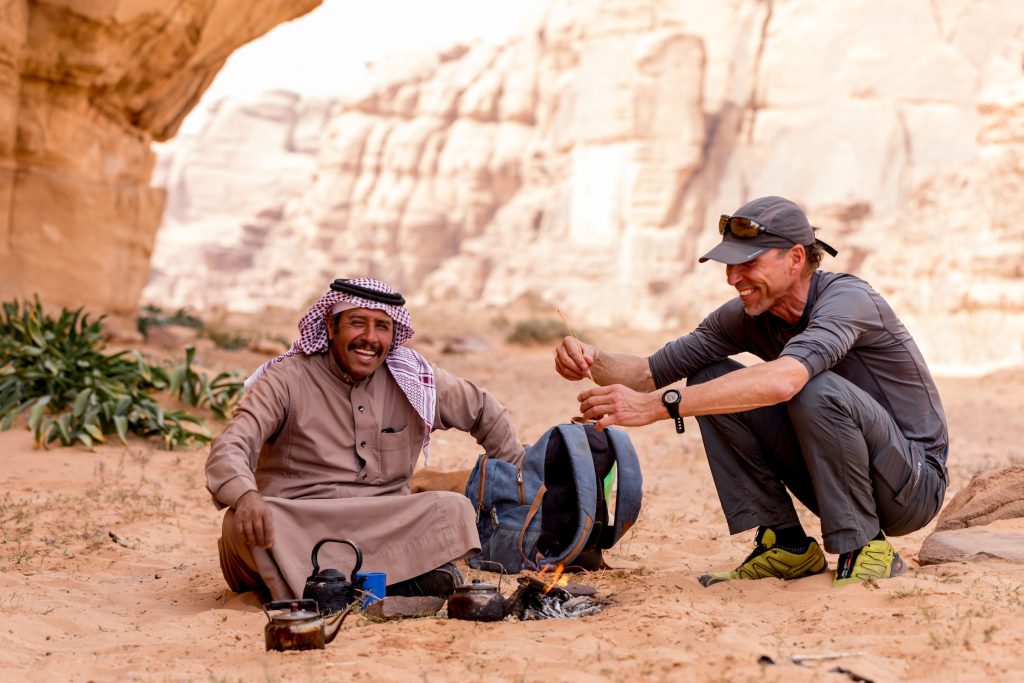
The very last night before the long-anticipated sunrise hike to Machu Picchu, it was time to bid our porters a proper farewell. After dinner, our guide, José, led all of us guests into the meal tent where he told us a flat tip amount that the guides would expect and divide between themselves. Then he left for us to work it out.
An uncomfortable silence ensued. “I want to tip, but I don’t want to be told how much,” one guy commented. “Can we do it privately?” another asked. “This is awkward,” a girl said.
What happened? It’s not that the group didn’t want to tip, but the discomfort was palpable.
As travel industry professionals, we all have experience in international settings with partners from around the world. However, despite our many commonalities, we also have deeply ingrained cultural differences that — if ignored or not recognized — can create misunderstandings, miscommunication, and otherwise uncomfortable situations.
The story above is a classic example of two cultures colliding. In cultural theory, we often reference the iceberg: You see just the tip on the surface, but the mass lies underneath. We see behaviors and tendencies that are driven by societal norms, philosophy, and belief systems that run profoundly deep. One of the pioneers of cultural research is Geert Hofstede , whose work is internationally respected in academia, social science, and business. Hofstede’s cultural dimension models are based on data gathered worldwide to understand culture through the lens of economics, communication, and cooperation.
For this article, we’ll focus on four such dimensions often encountered in the adventure travel industry. Before we begin, it’s important to remember not to just talk about other cultures but stress the need to reflect on our own cultural orientation . We must consider our geography, upbringing, and beliefs so we can be dynamic and responsive to the many various cultures we will encounter in an ever increasingly globalized world.
Individualism vs Collectivism
What is it? In the example from Peru, we see individualism at work. On Hofstede's scale , Peru and the United States are about as wide apart as they come. Like much of Latin America, Peru is highly collectivist, meaning society is interdependent and defines itself in terms of “we” rather than “me.” Individualist societies, on the other hand, are largely self-reliant. When it comes to money, in a collectivist culture, one person’s salary may support much more than just the immediate family, whereas someone from a more individualistic society might see money as extremely private. What I experienced in Peru was the group-oriented perspective of the guides and porters clashing with the more private, individual orientation of the guests.
Where might you encounter it? Generally speaking, Latin America, Africa, and Asia are primarily collectivist regions while much of Europe, North America, and Western-oriented countries are more individualist. On a ground level, your guides, vendor partners, suppliers, and guests are where this cultural dimension is likely to come into play.
How to address it? For those coming from an individualist background, it’s important to recognize group thought and understand that decision-making is not autonomous. For those coming from a collectivist background, recognizing values such as independent thought and privacy is paramount.
In our small-group trips, I address individualism versus collectivism during one of our dinners. I invite the local guide to talk about related cultural values, such as the importance of family. Engaging conversations ensue and often lead to introspection and new perspectives. Regarding tipping, I supply an envelope for tips to be added at will. I then count the total at the end to make sure there’s enough before giving to the guide to distribute equally to the local team. This satisfies the needs of both cultures while preventing discomfort.
Direct vs Indirect Communication
What is it? American anthropologist Edward Hall as well as Dutch culturalist Fons Trompenaars explored the concept of high-context and low-context communication, or indirect versus direct communication. A U.S. American might take a “yes” at face value while missing high-context clues such as evasiveness that actually indicate “no.” Saving face, or not embarrassing oneself in front of a group, is another very common cultural value related to this dimension that is often encountered in intercultural situations.
Where might you encounter it? Germany is a classic example of low-context, direct communication where the emphasis is on words and clear speech to convey meaning. On the opposite end, Japan, China, or Brazil clue us in to the nuances of indirect communication through body language, eye contact (or not), and flowery speech where the delivery and contextual clues matter just as much or more than the words themselves.
How to address it? Like with every cultural dimension, first evaluate where you stand relative to the other party. Are you having a hard time getting a firm or quick answer from a vendor? It may be that he’s trying to say no without directly telling you so. Instead of asking, “Can you have the revised itinerary to me by Friday?” ask open-ended questions that will draw a more holistic response: “What do you need from me in order to finish this itinerary by the end of the week? Can you tell me the steps it will take to complete this task?”
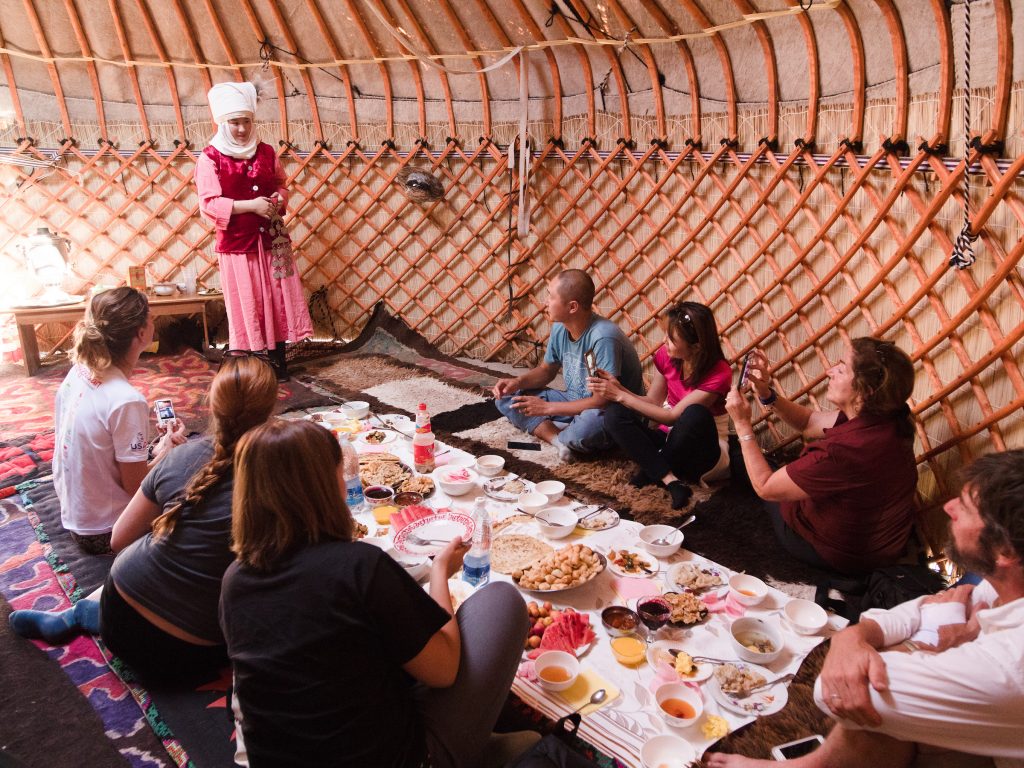
Power Distance
What is it? Power distance is an important cultural dimension that comes into play in instances involving hierarchy, how authority is distributed, and the degree to which inequity is accepted in a given culture. In a high-power distance society, hierarchy is a given aspect of social structure where one’s place in society is accepted and further justification might not be needed. A subordinate is unlikely to challenge or even gain access to a higher-up whereas in a low-power distance context, decision-making and rank is much more egalitarian.
Where might you encounter it? Power distance can be found in a range of cultures and is often the highest in countries with a large gap between rich and poor. Formality, material possessions, and rank are all indicative of power distance. Do your business partners dress sharply and use formal titles? Are dinners hosted at a restaurant in a five-star hotel? Is there an emphasis on how old or established your partner’s company is? These are all indicative of a society with higher power distance.
How to address it . Power distance can be a tricky cultural conflict in adventure tourism particularly in developing and/or conservative regions. Many of us from progressive backgrounds look at fairness and equality as an ultimate truth, especially when it comes to women, gender, and society.
In Morocco, for example, there’s a power distance aspect between myself as a 30-something female and the often older males involved in the tourism industry. I have found the best way to quickly establish status in a way that results in respect is to have a Moroccan colleague introduce me. Rather than be offended and peg it all on gender inequality, I recognize the role that power distance has in this society and the value of referral to build cultural trust and break down barriers.
It can be easy for us to quickly judge a place or circumstance based on perceived inequity. With women in rural communities, for example, family may be a significant cultural value attached to identity as well as a source of pride, even if, from our perspective, having 10 kids is a financial and social disadvantage. The strategy here is to listen rather than judge, encourage rather than force, and know when to check your own perspectives. Also recognize that change, especially around conservative traditions and gender roles, does not happen overnight but rather over generations.
Rules vs Relationship Orientation
What is it? In rule-based societies, such as the United States, emphasis is placed on external rules that theoretically apply universally, such as fixed prices at the store or legal business contracts. Relationship-based societies rely much more on fluidity and context. Prices or contracts are determined based on the relationship, not some arbitrary external force. Rule-based societies often gravitate toward direct communication and relationship-based cultures are often more indirect.
Where might you encounter it? Relationship-oriented cultures often go hand-in-hand with places that have historic distrust of government through dictatorships, oppressive regimes, or general disorganization. If you can’t depend on the law to enforce business agreements, you have to trust your partners. Latin America, China, and much of the Middle East are great examples of relationship-oriented cultures where establishing a network and getting to know your counterparts is key to success.
Have you ever been lost in the dizzying medina of Fes, Morocco, and needed a local to guide you out of the labyrinth? This is relationship-based orientation in action and can be bewildering for a rule-based person accustomed to streets that can be navigated alone by clear signage and grid patterns.
How to address it? For contractually minded individuals that are more accustomed to binding agreements on paper, invest time in getting to know your partners. This may mean many cups of tea in Jordan, drawn out lunches chatting about football in Mexico, or karaoke outings in South Korea. Recognize that trust may take a long time but once your relationship with your partner is established, it is taken seriously and you will be well cared for. For a relationship-oriented culture dealing with a more rule-based partner, recognize that paperwork and contracts are important to their business process and be willing to look them over, ask questions, and have a dialogue about them.
Putting Cultural Competency to Work
Cultural psychology is a vast field of its own with a host of incredibly valuable resources. Hofstede’s Cultural Compass tool is a quick and easy way for travel professionals to compare countries across their different dimensions. These dimensions along with key cultural tips are easily referenced in the CultureMee app, a fantastic platform to help navigate cultures while on the road (and a great one to share with clients!).
Travel is the perfect opportunity for cultural education to bridge the gap of understanding among both internal teams and external partners. Host and guest, vendor and supplier, community and visitor all play a role in the dance of cultures.
As Henry Miller wisely said, “The destination is never a place, but a new way of seeing things.”
UN Tourism | Bringing the world closer

Ethics, Culture and Social Responsibility
- Global Code of Ethics for Tourism
- Accessible Tourism
Tourism and Culture
- Women’s Empowerment and Tourism
share this content
- Share this article on facebook
- Share this article on twitter
- Share this article on linkedin
The convergence between tourism and culture, and the increasing interest of visitors in cultural experiences, bring unique opportunities but also complex challenges for the tourism sector.
“Tourism policies and activities should be conducted with respect for the artistic, archaeological and cultural heritage, which they should protect and pass on to future generations; particular care should be devoted to preserving monuments, worship sites, archaeological and historic sites as well as upgrading museums which must be widely open and accessible to tourism visits”
UN Tourism Framework Convention on Tourism Ethics
Article 7, paragraph 2
This webpage provides UN Tourism resources aimed at strengthening the dialogue between tourism and culture and an informed decision-making in the sphere of cultural tourism. It also promotes the exchange of good practices showcasing inclusive management systems and innovative cultural tourism experiences .
About Cultural Tourism
According to the definition adopted by the UN Tourism General Assembly, at its 22nd session (2017), Cultural Tourism implies “A type of tourism activity in which the visitor’s essential motivation is to learn, discover, experience and consume the tangible and intangible cultural attractions/products in a tourism destination. These attractions/products relate to a set of distinctive material, intellectual, spiritual and emotional features of a society that encompasses arts and architecture, historical and cultural heritage, culinary heritage, literature, music, creative industries and the living cultures with their lifestyles, value systems, beliefs and traditions”. UN Tourism provides support to its members in strengthening cultural tourism policy frameworks, strategies and product development . It also provides guidelines for the tourism sector in adopting policies and governance models that benefit all stakeholders, while promoting and preserving cultural elements.
Recommendations for Cultural Tourism Key Players on Accessibility
UN Tourism , Fundación ONCE and UNE issued in September 2023, a set of guidelines targeting key players of the cultural tourism ecosystem, who wish to make their offerings more accessible.
The key partners in the drafting and expert review process were the ICOMOS International Cultural Tourism Committee and the European Network for Accessible Tourism (ENAT) . The ICOMOS experts’ input was key in covering crucial action areas where accessibility needs to be put in the spotlight, in order to make cultural experiences more inclusive for all people.
This guidance tool is also framed within the promotion of the ISO Standard ISO 21902 , in whose development UN Tourism had one of the leading roles.
Download here the English and Spanish version of the Recommendations.
Compendium of Good Practices in Indigenous Tourism

The report is primarily meant to showcase good practices championed by indigenous leaders and associations from the Region. However, it also includes a conceptual introduction to different aspects of planning, management and promotion of a responsible and sustainable indigenous tourism development.
The compendium also sets forward a series of recommendations targeting public administrations, as well as a list of tips promoting a responsible conduct of tourists who decide to visit indigenous communities.
For downloads, please visit the UN Tourism E-library page: Download in English - Download in Spanish .
Weaving the Recovery - Indigenous Women in Tourism

This initiative, which gathers UN Tourism , t he World Indigenous Tourism Alliance (WINTA) , Centro de las Artes Indígenas (CAI) and the NGO IMPACTO , was selected as one of the ten most promising projects amoung 850+ initiatives to address the most pressing global challenges. The project will test different methodologies in pilot communities, starting with Mexico , to enable indigenous women access markets and demonstrate their leadership in the post-COVID recovery.
This empowerment model , based on promoting a responsible tourism development, cultural transmission and fair-trade principles, will represent a novel community approach with a high global replication potential.
Visit the Weaving the Recovery - Indigenous Women in Tourism project webpage.
Inclusive Recovery of Cultural Tourism

The release of the guidelines comes within the context of the International Year of Creative Economy for Sustainable Development 2021 , a UN initiative designed to recognize how culture and creativity, including cultural tourism, can contribute to advancing the SDGs.
UN Tourism Inclusive Recovery Guide, Issue 4: Indigenous Communities

Sustainable Development of Indigenous Tourism
The Recommendations on Sustainable Development of Indigenous Tourism provide guidance to tourism stakeholders to develop their operations in a responsible and sustainable manner within those indigenous communities that wish to:
- Open up to tourism development, or
- Improve the management of the existing tourism experiences within their communities.
They were prepared by the UN Tourism Ethics, Culture and Social Responsibility Department in close consultation with indigenous tourism associations, indigenous entrepreneurs and advocates. The Recommendations were endorsed by the World Committee on Tourism Ethics and finally adopted by the UN Tourism General Assembly in 2019, as a landmark document of the Organization in this sphere.
Who are these Recommendations targeting?
- Tour operators and travel agencies
- Tour guides
- Indigenous communities
- Other stakeholders such as governments, policy makers and destinations
The Recommendations address some of the key questions regarding indigenous tourism:

Download PDF:
- Recommendations on Sustainable Development of Indigenous Tourism
- Recomendaciones sobre el desarrollo sostenible del turismo indígena, ESP
UN Tourism/UNESCO World Conferences on Tourism and Culture
The UN Tourism/UNESCO World Conferences on Tourism and Culture bring together Ministers of Tourism and Ministers of Culture with the objective to identify key opportunities and challenges for a stronger cooperation between these highly interlinked fields. Gathering tourism and culture stakeholders from all world regions the conferences which have been hosted by Cambodia, Oman, Türkiye and Japan have addressed a wide range of topics, including governance models, the promotion, protection and safeguarding of culture, innovation, the role of creative industries and urban regeneration as a vehicle for sustainable development in destinations worldwide.
Fourth UN Tourism/UNESCO World Conference on Tourism and Culture: Investing in future generations. Kyoto, Japan. 12-13 December 2019 Kyoto Declaration on Tourism and Culture: Investing in future generations ( English, French, Spanish, Arabic, Russian and Japanese )
Third UN Tourism/UNESCO World Conference on Tourism and Culture : For the Benefit of All. Istanbul, Türkiye. 3 -5 December 2018 Istanbul Declaration on Tourism and Culture: For the Benefit of All ( English , French , Spanish , Arabic , Russian )
Second UN Tourism/UNESCO World Conference’s on Tourism and Culture: Fostering Sustainable Development. Muscat, Sultanate of Oman. 11-12 December 2017 Muscat Declaration on Tourism and Culture: Fostering Sustainable Development ( English , French , Spanish , Arabic , Russian )
First UN Tourism/UNESCO World Conference’s on Tourism and Culture: Building a new partnership. Siem Reap, Cambodia. 4-6 February 2015 Siem Reap Declaration on Tourism and Culture – Building a New Partnership Model ( English )
UN Tourism Study on Tourism and Intangible Cultural Heritage
The first UN Tourism Study on Tourism and Intangible Cultural Heritage provides comprehensive baseline research on the interlinkages between tourism and the expressions and skills that make up humanity’s intangible cultural heritage (ICH).

Through a compendium of case studies drawn from across five continents, the report offers in-depth information on, and analysis of, government-led actions, public-private partnerships and community initiatives.
These practical examples feature tourism development projects related to six pivotal areas of ICH: handicrafts and the visual arts; gastronomy; social practices, rituals and festive events; music and the performing arts; oral traditions and expressions; and, knowledge and practices concerning nature and the universe.
Highlighting innovative forms of policy-making, the UN Tourism Study on Tourism and Intangible Cultural Heritage recommends specific actions for stakeholders to foster the sustainable and responsible development of tourism by incorporating and safeguarding intangible cultural assets.
UN Tourism Study on Tourism and Intangible Cultural Heritage
- UN Tourism Study
- Summary of the Study
Studies and research on tourism and culture commissioned by UN Tourism
- Tourism and Culture Synergies, 2018
- UN Tourism Study on Tourism and Intangible Cultural Heritage, 2012
- Big Data in Cultural Tourism – Building Sustainability and Enhancing Competitiveness (e-unwto.org)
Outcomes from the UN Tourism Affiliate Members World Expert Meeting on Cultural Tourism, Madrid, Spain, 1–2 December 2022
UN Tourism and the Region of Madrid – through the Regional Ministry of Culture, Tourism, and Sports – held the World Expert Meeting on Cultural Tourism in Madrid on 1 and 2 December 2022. The initiative reflects the alliance and common commitment of the two partners to further explore the bond between tourism and culture. This publication is the result of the collaboration and discussion between the experts at the meeting, and subsequent contributions.
Relevant Links
- 3RD UN Tourism/UNESCO WORLD CONFERENCE ON TOURISM AND CULTURE ‘FOR THE BENEFIT OF ALL’
Photo credit of the Summary's cover page: www.banglanatak.com
- Work + Money
- Relationships
- Slow Living
10 Conscious Travel Magazines Inspiring Wanderlust + Cultural Appreciation

Travel Magazines To Expand Your Horizons
Searching for your next summer read or magazine to take in-flight? Skip the tabloids and pick up a digital or print copy of one of the following travel publications. Each magazine is carefully crafted by dedicated storytellers and creators who all have one thing in common: a longing to better understand the world and its people. Challenging and important topics are not avoided; rather, readers are invited to explore culture, place, and identity while allowing themselves to see the world through the eyes of others. With captivating photography, honest words, and inspiring art, here are 10 of the most impactful digital and print travel magazines inspiring cultural appreciation.
Jungles in Paris

Vision | Purpose-driven media telling stories about nature & culture – specifically celebrating human & non-human subjects at the risk of extinction
Articles That Inspire Us | People Of The Yak: Bhutan’s Brokpa Herders, Cutting It Fine: Hand-Mowers Of Addison County, Vermont
Named one of the best Independent Travel Magazines by The Guardian, The New York Times calls Jungles in Paris an artistic armchair travel platform. The online publication produces short, focused stories that invite readers to celebrate the diversity in the world and prioritize the local, the endemic, the time-honored, and the meaningful.
Apart from the stunning photo essays published to the website, Jungles in Paris produces incredible videos on Youtube.
Learn more about Jungles in Paris
Boat magazine.

Vision | An independent travel & culture publication focusing on a different, inspiring city for each issue
Articles That Inspire Us | Uzbekistan: Water In The Desert , Havana: The Mondays Club
Boat Magazine tells untold stories about cities all over the world, specifically from the perspective of locals. The publication is unique in that, for each issue of print, the staff physically relocates and lives in the focus city, working with locals to craft essays, photos, interviews, artwork, and more. By doing this, Boat Magazine hopes to redefine and update the readers’ perceptions of place – to act as a RESET button for all preconceived ideas. There are currently 13 issues covering cities from all over the world, as well as an online journal and city index.
Subscriptions and individual issues are available for purchase online.
Learn more about Boat Magazine
The culture-ist.

Vision | An online magazine, media platform, and movement designed for people who are passionate about being active members in a global society
Articles That Inspire Us | Why Our Planet And Its People Need Slow Fashion , Two Afternoons In A Syrian Refugee Camp
Founded by Maria and Anthony Russo, The Culture-ist covers conscious travel, social good, and holistic wellness. Featuring city guides and travel essays, wellness articles and nonprofit spotlights, as well as compelling videos and photography, the online publication uncovers the beauty and mystery of foreign lands, while also respecting different cultures and connecting people from all over the world.
The Culture-ist partners with HumanityUnified , a nonprofit organization empowering communities to rise out of poverty through education, food security projects, and economic opportunities.
Learn more about The Culture-ist
Cereal magazine.

Vision | A bi-annual travel & style magazine focusing on a select number of destinations, alongside engaging interviews and stories on unique design, art, and fashion
Articles That Inspire Us | The 7th Room, Dancing With The Taj
Published in the United Kingdom, Cereal Magazine captures exquisite and unique details around the world. Beautiful photography, alongside engaging interviews and stories, comprise the minimalist pages of each print issue. City guidebooks are also published, both online and in print, highlighting select restaurants, stores, and landmarks.
Learn more about Cereal Magazine
Off assignment.
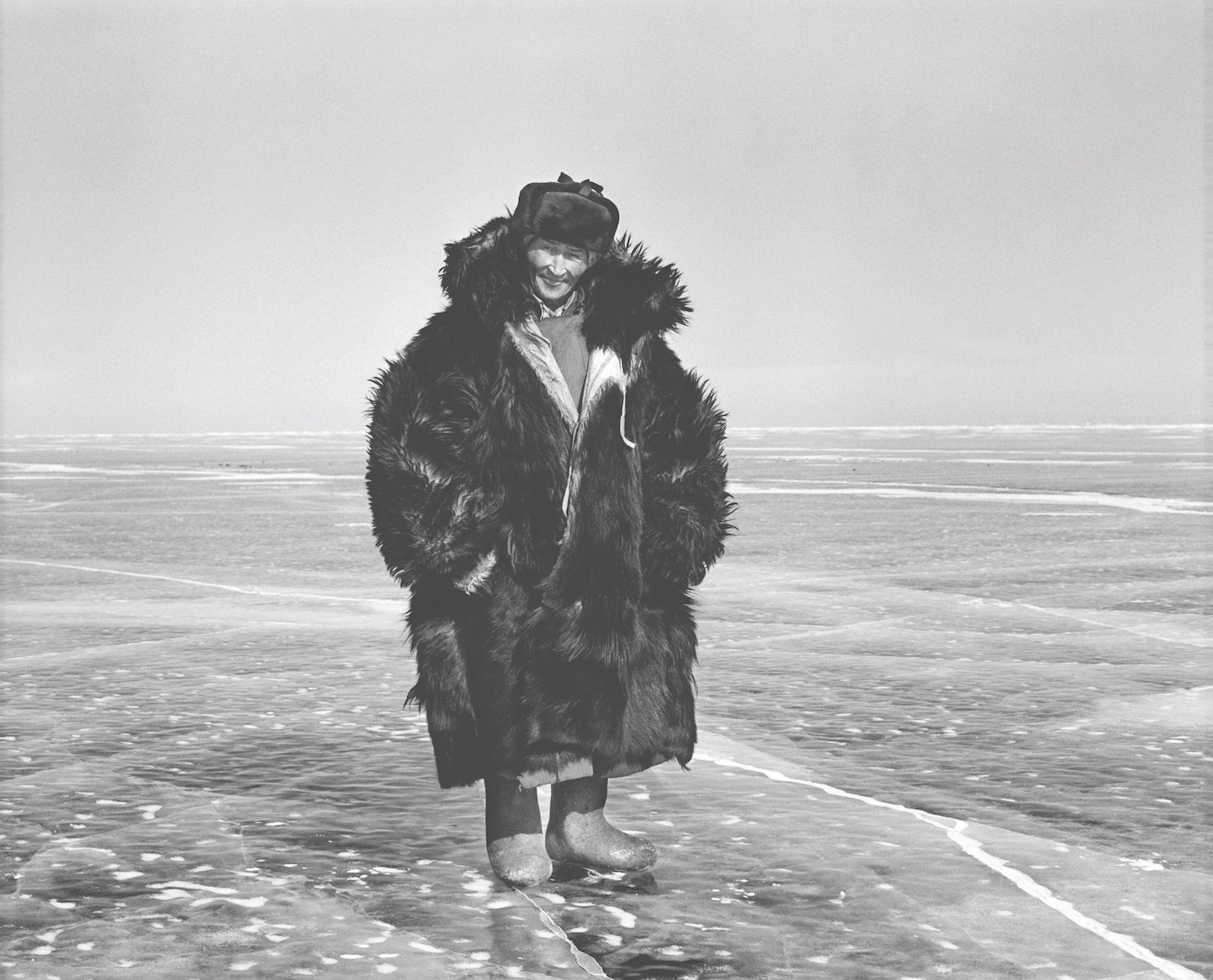
Vision | A media platform for writers and journalists to share the untold, life-altering travel stories that often go unpublished
Articles That Inspire Us | Letters To A Stranger , What I Didn’t Say
More than a magazine, Off Assignment is also a literary space – an online platform for original writing about rare places, people, and stories. Sparked by renowned author and travel writer Pico Iyer, the no-gloss, no-frills magazine was founded on the principle that many writers are simply sitting on their best stories, the ones that rarely make the narrow confines of an article. These stories are raw, untold, and life-changing; they are the stories that shrink the gap between the traveler and the reader.
A nonprofit publication, Off Assignment is funded by generous donations from readers and friends.
Learn more about Off Assignment
Berlin quarterly.

Vision | To bring readers insightful and inquiring reportage and stories from around the globe
Issues That Inspire Us | The Sixth Issue
A bi-annual print publication, Berlin Quarterly is a European review and culture journal with global perspective and artistic flare. Each issue includes a variety of voices and art forms, ranging from nonfiction essays to poetry and drawings. In an interview with Stack , James Guerin, the publisher of Berlin Quarterly, describes the magazine as a way of looking at the world without prejudice. By using print art to cultivate empathy and tolerance, the publication achieves this.
Learn more about Berlin Quarterly
Passion passport.
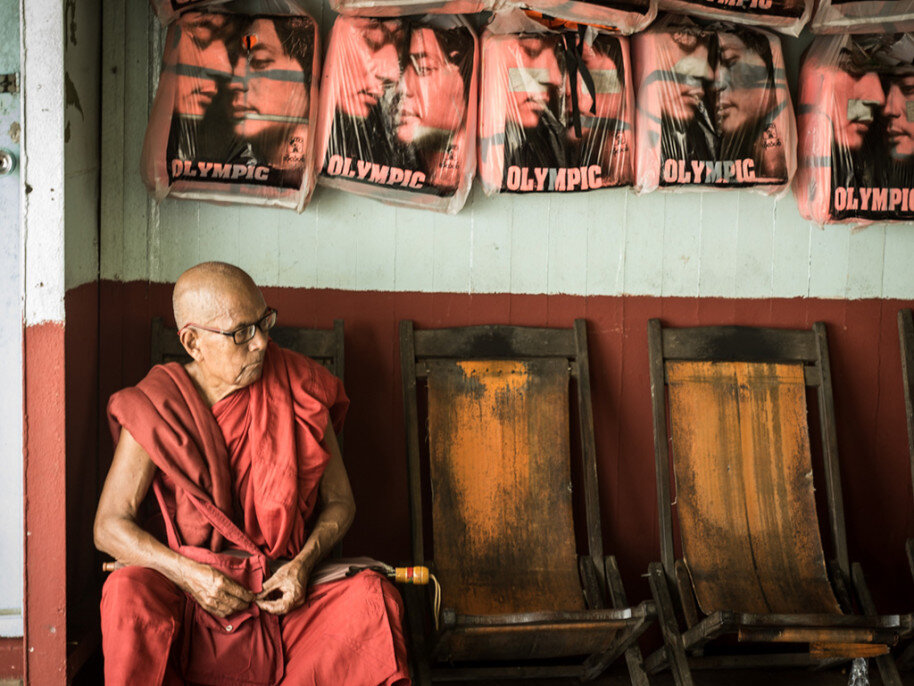
Vision | An online publication sharing impactful stories about traveling on purpose
Articles That Inspire Us | Singing, Dancing, and Educating: A Women’s Health Initiative in Zimbabwe
Founded in 2013, Passion Passport is a media platform for storytellers to share about the pivotal moments, people, and places they’ve encountered while traveling. Through captivating imagery, videography, and written word, the publication provides online space for explorers and creators to tell the stories that have shaped their perspective and given them a better sense of who they are.
Learn more about Passion Passport
Peeps magazine.

Vision | A print magazine tracking cultural shifts around the world
Articles That Inspire Us | Mobile Autonomy
Peeps Magazine is a print publication aimed at capturing the bigger picture of human affairs through well-researched global stories, while also widening the lens through which we receive news and information. Each issue invites readers to join in on engaging analysis and insight to contemporary affairs through essays written by dedicated experts. These researchers are masters of subjects such as anthropology, sociology, human geography, and social psychology.
In collaboration with the magazine, Peep Talks are live events featuring expert speakers on people and culture, and Peeps Forum is a digital space for people who study people to share stories.
Learn more about Peeps Magazine
Drift magazine.

Vision | A print magazine devoted to exploring coffee culture around the world
Issues That Inspire Us | Volume 3: Havana
Printed bi-annually, Drift Magazine is a city-specific publication devoted to one of the world’s most beloved beverages: coffee. Each issue covers the wonderful beverage, as well as the people who drink it and the cities they inhabit. Recognizing that some of the most meaningful moments of life happen with coffee in the background, the magazine captures the tie between coffee, places, and communities around the world.
Subscriptions and individual issues are available on the website.
Learn more about Drift Magazine
Yuca magazine.

Vision | An independent publication inviting readers to reflect upon cultural constructs and personal identities through visual and written content
Issues That Inspire Us | Volume 2: The Architecture Alibi & Migrations Issue
Created in Colombia and distributed all over the world, Yuca Magazine is a bi-annual print publication devoted to art, photography, literature, and culture. Topics, such as migration, cultural perspective and constructs, architecture, place, and identity are explored through a variety of perspectives and artistic approaches.
Learn more about Yuca Magazine

National Geographic content straight to your inbox—sign up for our popular newsletters here
- THE BIG IDEA
Why travel should be considered an essential human activity
Travel is not rational, but it’s in our genes. Here’s why you should start planning a trip now.

In 1961, legendary National Geographic photographer Volkmar Wentzel captured two women gazing at the surf off Peggy’s Cove, Nova Scotia. This and all the other images in this story come from the National Geographic image collection.
I’ve been putting my passport to good use lately. I use it as a coaster and to level wobbly table legs. It makes an excellent cat toy.
Welcome to the pandemic of disappointments. Canceled trips, or ones never planned lest they be canceled. Family reunions, study-abroad years, lazy beach vacations. Poof. Gone. Obliterated by a tiny virus, and the long list of countries where United States passports are not welcome.
Only a third of Americans say they have traveled overnight for leisure since March, and only slightly more, 38 percent, say they are likely to do so by the end of the year, according to one report. Only a quarter of us plan on leaving home for Thanksgiving, typically the busiest travel time. The numbers paint a grim picture of our stilled lives.
It is not natural for us to be this sedentary. Travel is in our genes. For most of the time our species has existed, “we’ve lived as nomadic hunter-gatherers moving about in small bands of 150 or fewer people,” writes Christopher Ryan in Civilized to Death . This nomadic life was no accident. It was useful. “Moving to a neighboring band is always an option to avoid brewing conflict or just for a change in social scenery,” says Ryan. Robert Louis Stevenson put it more succinctly: “The great affair is to move.”
What if we can’t move, though? What if we’re unable to hunt or gather? What’s a traveler to do? There are many ways to answer that question. “Despair,” though, is not one of them.

In this aerial view from 1967, wall-to-wall seaside sunbathers relax under umbrellas or on beach towels in Ocean City, Maryland .

A 1967 fall festival in Guadalajara, Mexico , starred traditionally costumed musicians and dancers.
We are an adaptive species. We can tolerate brief periods of forced sedentariness. A dash of self-delusion helps. We’re not grounded, we tell ourselves. We’re merely between trips, like the unemployed salesman in between opportunities. We pass the days thumbing though old travel journals and Instagram feeds. We gaze at souvenirs. All this helps. For a while.
We put on brave faces. “Staycation Nation,” the cover of the current issue of Canadian Traveller magazine declares cheerfully, as if it were a choice, not a consolation.
Today, the U.S. Travel Association, the industry trade organization, is launching a national recovery campaign called “ Let’s Go There .” Backed by a coalition of businesses related to tourism—hotels, convention and visitor bureaus, airlines—the initiative’s goal is to encourage Americans to turn idle wanderlust into actual itineraries.
The travel industry is hurting. So are travelers. “I dwelled so much on my disappointment that it almost physically hurt,” Paris -based journalist Joelle Diderich told me recently, after canceling five trips last spring.
(Related: How hard has the coronavirus hit the travel industry? These charts tell us.)
My friend James Hopkins is a Buddhist living in Kathmandu . You’d think he’d thrive during the lockdown, a sort-of mandatory meditation retreat. For a while he did.
But during a recent Skype call, James looked haggard and dejected. He was growing restless, he confessed, and longed “for the old 10-countries-a-year schedule.” Nothing seemed to help, he told me. “No matter how many candles I lit, or how much incense I burned, and in spite of living in one of the most sacred places in South Asia, I just couldn’t change my habits.”
When we ended our call, I felt relieved, my grumpiness validated. It’s not me; it’s the pandemic. But I also worried. If a Buddhist in Kathmandu is going nuts, what hope do the rest of us stilled souls have?
I think hope lies in the very nature of travel. Travel entails wishful thinking. It demands a leap of faith, and of imagination, to board a plane for some faraway land, hoping, wishing, for a taste of the ineffable. Travel is one of the few activities we engage in not knowing the outcome and reveling in that uncertainty. Nothing is more forgettable than the trip that goes exactly as planned.
Related: Vintage photos of the glamour of travel

Travel is not a rational activity. It makes no sense to squeeze yourself into an alleged seat only to be hurled at frightening speed to a distant place where you don’t speak the language or know the customs. All at great expense. If we stopped to do the cost-benefit analysis, we’d never go anywhere. Yet we do.
That’s one reason why I’m bullish on travel’s future. In fact, I’d argue travel is an essential industry, an essential activity. It’s not essential the way hospitals and grocery stores are essential. Travel is essential the way books and hugs are essential. Food for the soul. Right now, we’re between courses, savoring where we’ve been, anticipating where we’ll go. Maybe it’s Zanzibar and maybe it’s the campground down the road that you’ve always wanted to visit.
(Related: Going camping this fall? Here’s how to get started.)
James Oglethorpe, a seasoned traveler, is happy to sit still for a while, and gaze at “the slow change of light and clouds on the Blue Ridge Mountains” in Virginia, where he lives. “My mind can take me the rest of the way around this world and beyond it.”
It’s not the place that is special but what we bring to it and, crucially, how we interact with it. Travel is not about the destination, or the journey. It is about stumbling across “a new way of looking at things,” as writer Henry Miller observed. We need not travel far to gain a fresh perspective.
No one knew this better than Henry David Thoreau , who lived nearly all of his too-short life in Concord, Massachusetts. There he observed Walden Pond from every conceivable vantage point: from a hilltop, on its shores, underwater. Sometimes he’d even bend over and peer through his legs, marveling at the inverted world. “From the right point of view, every storm and every drop in it is a rainbow,” he wrote.
Thoreau never tired of gazing at his beloved pond, nor have we outgrown the quiet beauty of our frumpy, analog world. If anything, the pandemic has rekindled our affection for it. We’ve seen what an atomized, digital existence looks like, and we (most of us anyway) don’t care for it. The bleachers at Chicago ’s Wrigley Field; the orchestra section at New York City ’s Lincoln Center; the alleyways of Tokyo . We miss these places. We are creatures of place, and always will be.
After the attacks of September 11, many predicted the end of air travel, or at least a dramatic reduction. Yet the airlines rebounded steadily and by 2017 flew a record four billion passengers. Briefly deprived of the miracle of flight, we appreciated it more and today tolerate the inconvenience of body scans and pat-downs for the privilege of transporting our flesh-and-bone selves to far-flung locations, where we break bread with other incarnate beings.

Landscape architects work in their Rio de Janeiro, Brazil , studio in 1955.

A tourist photographs a towering century plant in St. Thomas, U.S. Virgin Islands, in 1956.
In our rush to return to the world, we should be mindful of the impact of mass tourism on the planet. Now is the time to embrace the fundamental values of sustainable tourism and let them guide your future journeys. Go off the beaten path. Linger longer in destinations. Travel in the off-season. Connect with communities and spend your money in ways that support locals. Consider purchasing carbon offsets. And remember that the whole point of getting out there is to embrace the differences that make the world so colorful.
“One of the great benefits of travel is meeting new people and coming into contact with different points of view,” says Pauline Frommer, travel expert and radio host.
So go ahead and plan that trip. It’s good for you, scientists say . Plotting a trip is nearly as enjoyable as actually taking one. Merely thinking about a pleasurable experience is itself pleasurable. Anticipation is its own reward.
I’ve witnessed first-hand the frisson of anticipatory travel. My wife, not usually a fan of travel photography, now spends hours on Instagram, gazing longingly at photos of Alpine lodges and Balinese rice fields. “What’s going on?” I asked one day. “They’re just absolutely captivating,” she replied. “They make me remember that there is a big, beautiful world out there.”
Many of us, myself included, have taken travel for granted. We grew lazy and entitled, and that is never good. Tom Swick, a friend and travel writer, tells me he used to view travel as a given. Now, he says, “I look forward to experiencing it as a gift.”
Related Topics
- TRAVEL PHOTOGRAPHY
- VINTAGE PHOTOGRAPHY
You May Also Like

Don’t rely on social media: Here’s why you should keep a travel journal

How to take perfect portrait photos
Free bonus issue.

What's new in London's museums ahead of King Charles III's Coronation

Explore 6 of history’s most infamous scams and hoaxes

We swapped baths for showers—but which one is better for you?

An antique process helps this photographer capture coastlines bound by Celtic soul
Humans really can have superpowers—scientists are studying them
- Perpetual Planet
- Environment
- Paid Content
History & Culture
- History & Culture
- Photography
- Mind, Body, Wonder
- Gory Details
- 2023 in Review
- Best of the World
- Terms of Use
- Privacy Policy
- Your US State Privacy Rights
- Children's Online Privacy Policy
- Interest-Based Ads
- About Nielsen Measurement
- Do Not Sell or Share My Personal Information
- Nat Geo Home
- Attend a Live Event
- Book a Trip
- Inspire Your Kids
- Shop Nat Geo
- Visit the D.C. Museum
- Learn About Our Impact
- Support Our Mission
- Advertise With Us
- Customer Service
- Renew Subscription
- Manage Your Subscription
- Work at Nat Geo
- Sign Up for Our Newsletters
- Contribute to Protect the Planet
Copyright © 1996-2015 National Geographic Society Copyright © 2015-2024 National Geographic Partners, LLC. All rights reserved
Arts & Culture
/https://tf-cmsv2-smithsonianmag-media.s3.amazonaws.com/filer_public/6b/1c/6b1cfcc8-f8af-4174-bb06-ed982d24b719/viewfinder_still_1_cmyk_copy.jpg)
The Long History of Art Inspired by Solar Eclipses
For centuries, curious artists have been trying to make sense of the celestial event
Elissaveta M. Brandon
:focal(512x322:513x323)/https://tf-cmsv2-smithsonianmag-media.s3.amazonaws.com/filer_public/72/a1/72a18732-777d-4a8f-9695-c0771163c0d7/butterflies-1st-csaba_daroczi-the_wedding_guest-cupoty_5-web.jpg)
See 11 Winning Images From the Close-Up Photographer of the Year Awards
:focal(640x482:641x483)/https://tf-cmsv2-smithsonianmag-media.s3.amazonaws.com/filer_public/ed/3f/ed3f3205-2947-4a9e-b438-cf9f5ed98f07/gettyimages-1611741811.jpeg)
ChatGPT Helped Write This Award-Winning Japanese Novel
:focal(545x587:546x588)/https://tf-cmsv2-smithsonianmag-media.s3.amazonaws.com/filer_public/aa/8c/aa8c0aec-5131-4c27-ab3a-da312a23d1fa/parquet_de_namur_pjf_namur_cp_16012024_3_0.jpeg)
Picasso and Chagall Paintings Found in Antwerp Basement—14 Years After They Vanished
:focal(700x527:701x528)/https://tf-cmsv2-smithsonianmag-media.s3.amazonaws.com/filer_public/34/6c/346c75cf-3966-4727-aafd-026d538a5ef9/wilkie2.jpg)
The Sensation Novelist Who Exposed the Plight of Victorian Women
Get the latest Travel & Culture stories from Smithsonian magazine in your inbox.
By checking this box, I agree to receive other information from the Smithsonian, including relevant content and programming, news about Smithsonian events, trips and offers, and museum updates. Click to visit our Privacy Statement . Easy unsubscribe links are provided in every email.
:focal(2000x1352:2001x1353)/https://tf-cmsv2-smithsonianmag-media.s3.amazonaws.com/filer_public/b3/cb/b3cb17ba-53f2-4126-a579-2df6b7cef998/gettyimages-869979928.jpg)
How Museums Are Preserving and Celebrating Selena's Legacy
The singer’s presence can still be felt at the Smithsonian’s National Museum of American History
April 16, 2024 2:06 p.m.
:focal(2860x1907:2861x1908)/https://tf-cmsv2-smithsonianmag-media.s3.amazonaws.com/filer_public/05/37/0537d8a1-37ed-41b2-9b9d-964c59535230/gettyimages-1237797266.jpg)
The English Farmers Who Harvest Rhubarb by Candlelight
The secret to the world’s sweetest rhubarb? Sealed sheds, total darkness and a little old-fashioned flair
April 16, 2024 8:07 a.m.
:focal(5065x3811:5066x3812)/https://tf-cmsv2-smithsonianmag-media.s3.amazonaws.com/filer_public/fb/c6/fbc64aa9-dd97-4a23-a293-c0c46dd16e0c/jn2019-02058_copy_copy.jpg)
This ‘Zen’ Motorcycle Still Inspires Philosophical Road-Trippers 50 Years Later
Robert M. Pirsig’s odyssey vehicle takes its final ride as it vrooms into public view for the first time ever at the Smithsonian’s National Museum of American History
April 15, 2024
:focal(700x527:701x528)/https://tf-cmsv2-smithsonianmag-media.s3.amazonaws.com/filer_public/3b/cd/3bcdeb68-6728-486f-8fde-0d198a7ae864/sally-and-tom.jpg)

This Play Within a Play Confronts the Power Dynamic Between Sally Hemings and Thomas Jefferson
In "Sally & Tom," Pulitzer Prize winner Suzan-Lori Parks continues her investigation of American myths
:focal(768x1024:769x1025)/https://tf-cmsv2-smithsonianmag-media.s3.amazonaws.com/filer_public/76/f7/76f77b17-226f-4366-9f19-dec408b2d55b/057c814e-8f34-4244-a777-024d95098ff3.jpg)
Behold 15 Beautiful Photos of Cherry Blossoms in Bloom
These 15 picture-perfect cherry blossom images from the Smithsonian Magazine Photo Contest are pretty in pink.
April 12, 2024
:focal(700x527:701x528)/https://tf-cmsv2-smithsonianmag-media.s3.amazonaws.com/filer_public/67/09/67093a85-b160-42fc-b0d1-19e3712e2fdf/benf.jpg)
The Real Story Behind Apple TV+'s 'Franklin'
A new limited series starring Michael Douglas as Benjamin Franklin revisits the founding father's years as the American ambassador to France
April 11, 2024
![travel and culture articles “For me, [Hanuman] was also a hero that lost faith in himself,” says director and star Dev Patel. “He didn’t have courage at one point and needed to be reminded of who he was.” ](https://th-thumbnailer.cdn-si-edu.com/7eZMmmuBKwtIItu2sPRoTAF0Mzc=/400x300/filters:no_upscale():focal(2705x1803:2706x1804)/https://tf-cmsv2-smithsonianmag-media.s3.amazonaws.com/filer_public/a4/6d/a46d49f5-d430-4fb9-9a99-a40773a0f0e5/hanuman3.jpg)
How the Hindu Deity Hanuman Inspired Dev Patel's 'Monkey Man'
The story of the half-human, half-monkey god mirrors the journey of the protagonist in Patel's directorial debut
April 5, 2024
:focal(900x677:901x678)/https://tf-cmsv2-smithsonianmag-media.s3.amazonaws.com/filer_public/f3/f9/f3f987ba-e72d-419c-8e52-3d4fb48cd169/opener_thailand.jpg)
Take a Trip to Thailand With These Smithsonian Photo Contest Images
See what makes this country so captivating, from picturesque rice paddies to striking cityscapes
:focal(1500x1000:1501x1001)/https://tf-cmsv2-smithsonianmag-media.s3.amazonaws.com/filer_public/7d/b0/7db0f5de-c832-4954-b656-53ce3abd9324/230217-mag1-103-d30-1246-trl1-a-f.jpg)
The Real Story Behind 'Mary & George'
The new mini-series dramatizes the Villiers family’s scandalous rise to power at the court of England's James I
:focal(1218x690:1219x691)/https://tf-cmsv2-smithsonianmag-media.s3.amazonaws.com/filer_public/6b/1c/6b1cfcc8-f8af-4174-bb06-ed982d24b719/viewfinder_still_1_cmyk_copy.jpg)
April 4, 2024
/https://tf-cmsv2-smithsonianmag-media.s3.amazonaws.com/filer/63/db/63db4d6d-4523-4be6-95e1-10efe76b1e53/james-niland-solar-eclipse.jpg)
What Indigenous Cultures From Around the World Believe About Eclipses
A Smithsonian folklorist looks back and finds stories that explain how a darkening of daytime skies provokes a foreboding of evil
Updated: April 4, 2024 | Originally Published: August 15, 2017
:focal(2813x2250:2814x2251)/https://tf-cmsv2-smithsonianmag-media.s3.amazonaws.com/filer_public/ad/d5/add518bc-fb15-4ddb-8f2d-304f720cad7f/aprmay2024_b16_prologue.jpg)
In His Garage, an Untrained Artist Created a Work of Sublime Divinity
How deep faith created one of the loveliest—and most curious—sacred objects in the Smithsonian collections
April/May 2024
:focal(524x409:525x410)/https://tf-cmsv2-smithsonianmag-media.s3.amazonaws.com/filer_public/01/d6/01d64905-b6fa-4ddc-84de-d0d95be7396d/aprmay2024_b08_prologue.jpg)
How Ben Franklin Invented the Library as We Know It
Books were rare and expensive in colonial America, but the founding father had an idea
:focal(1061x707:1062x708)/https://tf-cmsv2-smithsonianmag-media.s3.amazonaws.com/filer_public/98/ec/98ec6c17-cad3-442c-9c04-896051298c40/gettyimages-200525066-001.jpg)
An American-Made Sake Movement Is Underway
In the last decade, a truly homegrown effort has bubbled up in the United States
April 2, 2024
:focal(424x243:425x244)/https://tf-cmsv2-smithsonianmag-media.s3.amazonaws.com/filer_public/0d/9c/0d9c24b8-94bb-4b22-9b11-ba7ac2fd54bb/aprmay2024_b01_prologue.jpg)
This Artist Turned to Painting Animals in a Turbulent Historical Moment
The German Expressionist painter Franz Marc found a subject worth celebrating in the early 20th century
:focal(848x545:849x546)/https://tf-cmsv2-smithsonianmag-media.s3.amazonaws.com/filer_public/b2/81/b281c18a-f067-4276-8f60-72aa893c5cde/aprmay2024_b30_prologue.jpg)
In the Face of Prejudice, the ‘Black Swans’ Took the Ballet World by Storm
A new book shows how pioneering ballerinas captivated audiences and broke racial barriers
:focal(800x602:801x603)/https://tf-cmsv2-smithsonianmag-media.s3.amazonaws.com/filer_public/d3/3a/d33ac2e8-63a1-4f77-9bee-8e3e152d9721/smithmag-photocontest21-winners-header-4_3-1600x1200.jpg)
See the Winners of the 21st Annual Smithsonian Magazine Photo Contest
This year’s top photographs capture the quiet and chaotic from the American South to East Asia
:focal(600x631:601x632)/https://tf-cmsv2-smithsonianmag-media.s3.amazonaws.com/filer_public/74/6f/746f4e3d-d545-48f7-8be2-09600bf0fe5d/aprmay2024_b09_prologue.jpg)
How Kids Cornered the Market on Lemonade
The tangy tale of how America’s children learned to squeeze life for all it’s worth
:focal(750x564:751x565)/https://tf-cmsv2-smithsonianmag-media.s3.amazonaws.com/filer_public/c5/72/c5721860-fdfd-49ad-babe-51f9a59a2c31/240202_johnthorn_014.jpg)
How Baseball’s Official Historian Dug Up the Game’s Unknown Origins
A lifelong passion for the national pastime led John Thorn to redefine the sport's relationship with statistics and reveal the truth behind its earliest days
:focal(1280x963:1281x964)/https://tf-cmsv2-smithsonianmag-media.s3.amazonaws.com/filer_public/8a/d4/8ad498c4-5b4a-4a30-9cd1-a81f819315f9/hmsg_exh_revolutions_2024_005-scaled.jpg)
Explore a Century of Masterpieces, From Rodin to Picasso, Brought Together by One Passionate Collector
A self-described "little man in a hurry," Joseph Hirshhorn built a premier modern art collection
March 27, 2024
/https://tf-cmsv2-smithsonianmag-media.s3.amazonaws.com/videos/video/preview_image_KYAOzjUV_8fe386c5bea88d73f512a9b657e24839.jpeg)
Announcing the Winners of the 21st Annual Smithsonian Magazine Photo Contest
/https://tf-cmsv2-smithsonianmag-media.s3.amazonaws.com/videos/video/preview_image_eDPMelBv_0c8eb998572076a927667d18060291d2.jpeg)
Five Surprising Facts About Rosa Parks
/https://tf-cmsv2-smithsonianmag-media.s3.amazonaws.com/videos/video/preview_image_j0Xon9HQ_16521e5171933e0a158b92df683fee56.jpeg)
How the Meaning of Thanksgiving Has Changed
Photo of the day.
:focal(1800x1440:1801x1441)/https://tf-cmsv2-photocontest-smithsonianmag-prod-approved.s3.amazonaws.com/54000050-3942-436e-a352-3f4941c079c3.jpg)

Art + Culture
From festivals and events around the world, to museum openings and architectural wonders, let these articles inspire your next trip..

Embracing the World: My Love for Travel and New Cultures
By: Author Valerie Forgeard
Posted on Published: August 1, 2023 - Last updated: August 2, 2023
Categories Travel
You’ve got the travel bug, don’t you? That insatiable desire to pack your bags and explore what’s beyond your doorstep. It isn’t just about ticking off destinations from your bucket list or snapping the perfect Instagram photos. It’s more profound than that.
You yearn to immerse yourself in vibrant cultures, taste exotic cuisines, learn a smattering of foreign phrases, and understand how others live their day-to-day lives. To you, each journey is an open book filled with lessons waiting to be learned and stories begging to be told.
However, it’s not always smooth sailing – sometimes there are roadblocks along the way that test your resilience. But even these challenges bring a unique thrill of their own because they shape you into a seasoned traveller.
And after all is said and done, nothing beats the joy of coming home rich with memories and experiences that have forever changed your perspective on life and humanity.
Key Takeaways
- Traveling and experiencing new cultures enriches your perspective
- Immersion goes beyond sightseeing to traditions and authentic cuisine
- Culinary techniques showcase ancient recipes and traditions
- Embracing diversity enriches understanding and perspectives
The Excitement of Planning a Trip
There’s nothing quite like the rush of mapping out a new adventure, is there? The thrill of turning an abstract idea into a concrete plan is incomparable. You start by researching destinations, sifting through travel blogs and guidebooks. Each potential spot unveils a vibrant tapestry of customs and traditions waiting to be explored.
The next step involves clever budgeting strategies. There’s an art to this – stretching your money without compromising on experiences. The challenge lies in finding that sweet balance between affordability and indulgence.
Then comes packing essentials – choosing what gets to accompany you on this journey. It’s not just about clothes or gadgets; it’s about packing pieces of home while leaving enough room for souvenirs embodying the culture you’re immersing in.
This planning phase sets the tone for your entire trip, promising endless possibilities.
The Thrill of Departure
As you step into the bustling airport, the excitement of your journey begins to bubble up. The anticipation builds as you navigate through check-in, security procedures, and finally settle into your seat on the airplane, ready for take-off.
This flight won’t just transport you physically to a new destination but also immerse you in a rich tapestry of new experiences that’ll leave an indelible mark on your cultural understanding.
Airport Experiences
Navigating through a bustling airport, with its cacophony of foreign languages and the palpable anticipation in the air, is an intoxicating start to any journey. As you weave through throngs of travellers, perhaps you’ll encounter luggage mishaps or stringent security checks – these are part and parcel of your airport experience.
Here’s a snapshot that might resonate with you:
Each challenge brings its own adventure. While they may momentarily disrupt your travel rhythm, overcoming these hurdles can lead to rewarding experiences. You’re not merely passing through an airport; you’re absorbing new cultures before the journey even truly begins.
The Flight Journey
Once you’ve braved the airport’s hustle and bustle, you’ll find yourself cocooned in your airplane seat, greeted by the hum of engines preparing for take-off. The journey ahead is laced with anticipation.
Your eyes wander to the window; beneath a sea of clouds awaits an adventure unknown. You’re no longer simply a traveler but a global citizen, ready to immerse in diverse cultures.
In your carefully packed luggage lie essentials tailored to your destination: sunscreen for sunny beaches or woolen garments for snowy peaks.
Soon, the in-flight entertainment system comes alive on screen before you; choose from an array of movies from around the world, documentaries revealing cultural nuances or music that transcends borders.
Each flight is not just travel—it’s preparation for what lies beyond touchdown—each culture’s unique heartbeat awaiting your discovery.
First Impressions of a New Place
There’s nothing quite like that first glimpse of a new city, its skyline etched against the sky, full of promise and mystery waiting to be unraveled. Your heart races with arrival emotions; anticipation, excitement, and a dash of nervousness. The flurry of activity in unfamiliar surroundings can be overwhelming yet exhilarating.
Upon reaching your initial accommodations, you find comfort amidst the unknown. A soft bed to rest on after a long flight journey is an oasis in the chaos outside. Every corner holds a story – from the quaint cafe across the street to the bustling market around the corner.
Every sight intrigues you; every sound echoes with uniqueness – it’s as if every fiber of this place is inviting you on this journey to dive into its rich culture and history.
Exploring Local Landmarks
As you immerse yourself in the local culture, don’t miss out on exploring historical sites that have stood the test of time and natural wonders that take your breath away.
Each monument tells a story of times gone by, offering a rich tapestry of historical narratives waiting to be unraveled.
Marvel at nature’s masterpieces, where each vista offers not just scenic beauty but also an intimate glimpse into the unique ecosystem and biodiversity inherent to the place.
Historical Sites
Exploring historical sites isn’t just a hobby for me, it’s like diving headfirst into an epic tale of times long past. Each monument whispers secrets of civilizations that once were. You’re not merely visiting a place; you’re stepping back in time. Feel the hum of history beneath your feet as you wander through ancient ruins and archaeological discoveries.
Picture this: The sun-dappled stones of Machu Picchu or the mystifying pyramids of Giza standing tall against time’s test. Their monument preservation is a testament to human ingenuity and resilience. Trace your fingers over weathered inscriptions and centuries-old tales come alive. Connect with generations before.
So go on – immerse yourself in these timeless narratives. It’s more than travel; it’s an enriching cultural experience that forever changes the way you view our world.
Natural Wonders
You’ll find yourself breathless standing before nature’s incredible masterpieces, from the awe-inspiring Grand Canyon to the shimmering Northern Lights dancing across the sky. Each holds a unique charm and offers opportunities for scenic photography and wildlife observations.
The Grand Canyon, with its vast, layered bands of red rock revealing millions of years of geological history, is an overwhelming sight. Here, you can capture stunning shots of sunrise or sunset painting the canyon walls with ethereal light.
Meanwhile, the Northern Lights offer a different spectacle – they create an enchanting dance performance above you in hues of green, purple and blue. This natural phenomenon is not just visually captivating but also culturally significant to many indigenous communities around the world.
Through travel, you experience these wonders firsthand while respecting local cultures and traditions. You’re not just observing—you’re truly living it.
Immersing in the Local Culture
Immersing yourself in the local culture isn’t just about sightseeing; it’s also about diving into their traditions, tasting authentic cuisine, and mingling with the natives.
Cultural immersion benefits are aplenty. You get a sense of belonging, an understanding of diverse perspectives, and a richer travel experience.
But, remember that language learning obstacles can be part of this journey. Don’t be disheartened if you fumble over unfamiliar words or struggle to understand local dialects – these challenges often lead to amusing stories and fond memories.
Soak up every bit of your destination. Stroll through bustling markets filled with exotic smells and vibrant colors. Engage in spirited conversations at local cafes. Participate in traditional dances or festivals – all while being respectful towards their customs and way of life.
This is how you truly appreciate a new culture!
Sampling Local Cuisine
Savoring the local cuisine isn’t just about pleasing your palate; it’s an intimate way to understand a foreign culture. It gives you the chance to not only taste but also comprehend the history and tradition packed into every bite. Discover culinary techniques that have been passed down through generations, each dish telling a story of survival, celebration, or adaptation.
- Culinary Techniques: Witness how locals expertly knead dough or grill fish over open flames, breathing life into ancient recipes. Observe the finesse with which unique ingredients are transformed into dishes rich in flavor and heritage.
- Unique Ingredients: Embark on a sensory journey as you sample exotic fruits, spices, or even insects that are staples in some cultures. Appreciate how these ingredients contribute to intricate flavor profiles and symbolize regional biodiversity.
This truly is an incredible opportunity to explore and connect with diverse cultures through their food.
Interacting with Locals
After savoring the delightful tastes of various local cuisines, let’s shift our focus to another fascinating aspect of traveling – interacting with locals. It’s a wonderful way to truly immerse yourself in a new culture and gain perspectives that guidebooks can’t provide.
You may face language barriers, but don’t let them deter you. In fact, they can often lead to unexpected friendships and memorable encounters! Trying out public transportation is not just economical but also an excellent opportunity for these interactions.
Here’s a simple table to help you:
Remember, being open-minded and respectful will ensure your experiences are enriching and unforgettable.
Collecting Souvenirs and Memories
Don’t forget, gathering souvenirs and capturing moments isn’t just about material things; it’s about creating a tangible connection to the places you’ve visited.
It’s essential to be mindful of souvenir ethics. Always choose locally made goods that support the community rather than mass-produced items. This way, you’re respecting the culture and contributing to their economy.
Preserving memories goes beyond collecting trinkets. It often includes capturing scents, sounds, and smiles that stay with you long after your journey ends. Whether it’s through photographs or journaling vivid descriptions of your experiences, memory preservation is vital.
These captured moments can transport you back in time, rekindling emotions and stories from your travels. In essence, these keepsakes are priceless reminders of the cultures experienced and explored.
Reflecting on the Travel Experience
As you journey across the globe, immersing yourself in a variety of cultures, it’s crucial to reflect on these experiences. Understanding cultural differences isn’t just about recognizing that customs and traditions vary; it’s also about appreciating the diversity that makes each society unique and beautiful.
In delving deeper into your travel experiences, you’ll uncover layers of richness that will broaden your perspective and enrich your life.
Understanding Cultural Differences
Immersing yourself in different cultures isn’t just about sightseeing; it’s about understanding and respecting their unique traditions and customs. It’s a chance to appreciate the diversity of the world and broaden your perspective.
You’ll become more aware of cultural sensitivities, such as the significance of traditional attires. In Japan, wearing a kimono represents respect for their ancient customs. In India, donning a sari is a celebration of their rich history.
Another aspect to consider is customs regarding food and dining manners. Using chopsticks correctly when in China shows respect for their culinary culture.
Religious customs also play a significant role in understanding cultural differences. For example, understanding Ramadan fasting practices while visiting Islamic countries shows sensitivity towards their beliefs.
Remember: traveling is not solely for relaxation or excitement; it’s an opportunity to cultivate an appreciation for global diversity.
Appreciating Diversity
Embracing diversity isn’t just about accepting differences, it’s a thrilling journey that enriches our understanding and perspectives. When you travel, you encounter various cultures, traditions, languages, food habits and lifestyles. Appreciating this diversity is key to developing cultural sensitivity and a global mindset.
Here’s a table that emphasizes the importance of cultural sensitivity:
Having this awareness can help you better appreciate the diversity around you while enhancing your overall travel experience.
Planning the Next Adventure
Let’s dive into the exhilarating process of plotting our next journey, where every step towards planning feels like stepping on foreign soil! The thrill isn’t just in the travel itself but also in the meticulous preparation leading up to it. Here’s a short list to guide us:
- Budgeting Strategies : Start by defining your budget limits. This helps you prioritize and allocate resources effectively.
- Destination Research : Spend time researching your destination, its customs, language, and local hotspots.
- Look for cost-effective accommodations keeping comfort and location in mind.
- Discover local eateries which offer an authentic taste of the culture and fit within your budget.
- Pack smartly, carrying only essentials to make mobility easier.
Remember, each adventure is unique to its destination. Let’s embrace this diversity with open minds and hearts as we plan our next cultural exploration!
Sharing Travel Stories
Sharing your travel tales not only brings back treasured memories, but it also inspires and educates others about the unfamiliar terrains you’ve navigated. It’s a chance to relive those moments of unexpected discoveries, and yes, even recount your travel mishaps with humor.
Here’s a snapshot of some stories:
Each tale is an opportunity for you to share snippets of different cultures, promoting understanding and appreciation.
Incorporating Travel into Lifestyle
Incorporating global adventures into your daily life isn’t just about packing a suitcase and boarding a plane. It’s about transforming your mindset and opening your eyes to different ways of living. By understanding the cultural nuances that make each destination unique, you can truly appreciate the beauty of diversity and foster a sense of connection despite geographical distances.
Budgeting strategies also play an integral role in sustaining this lifestyle. You learn to prioritize experiences over material possessions and save for future trips rather than indulging in fleeting luxuries. Embracing sustainable tourism is another important aspect, ensuring that your travel leaves minimal environmental footprints while contributing positively to local communities.
In essence, integrating travel into everyday life is an enriching journey that reshapes perspectives and nurtures global citizenship.
Learning from Travel
After exploring how you can weave travel into your daily life, let’s delve deeper into the essence of traveling – learning from each journey. Traveling isn’t just about ticking off destinations on a map; it’s about immersing yourself in various cultures and gaining wisdom from diverse experiences.
Cultural adaptation is at the heart of every trip. By living even momentarily within different societal norms, you develop an appreciation for diversity and adaptability.
Language learning is another exciting aspect. Attempting to learn a few phrases in the local tongue not only eases communication but also enriches your cultural experience.
You’ll gain unique insights into history, art, and cuisine that textbooks can’t provide.
The encounters with locals will challenge your preconceptions and broaden your worldview.
Remember, every journey adds to your life story!
Dealing with Challenges
Embracing the unexpected bumps on your road trip can truly test your mettle, don’t you think? Dealing with challenges like language barriers and visa complications isn’t just a nuisance, it’s an exercise in adaptability and resilience.
You’re thrust into an unfamiliar setting, trying to decipher cryptic signs or decode a conversation that sounds like music to your untrained ears.
Visa complications might have you pacing in foreign offices, presenting documents you never knew existed. It’s frustrating when things don’t go as planned, but there’s something beautiful about pushing past these obstacles.
It teaches you patience, flexibility, and empathy for others navigating similar situations. So next time you’re tested abroad, remember: each challenge is another opportunity to grow and learn from the culture around you.
The Joy of Coming Home
As you unlock your front door and step into the familiar surroundings of home, there’s an undeniable joy that floods through you, tinged with a hint of nostalgia.
Your mind begins to replay memories of the journey you’ve just taken – the vibrant cultures you’ve embraced, the challenges conquered and lessons learned.
As these reflections bring a smile to your face, your heart starts to flutter with anticipation at the thought of planning your next great adventure.
Reflecting on the Journey
Reflection on your travels will deepen your understanding and appreciation of the diverse cultures you’ve encountered. Journey introspection becomes an essential part of your post-travel routine, where you recount the myriad experiences and lessons learned.
As you sit in your favorite armchair, flipping through photos or journal entries, remember the vibrant markets in Marrakesh, the quaint tea houses in Kyoto, or the soulful Fado music filling Lisbon’s alleyways. Each memory brings a newfound respect for diversity and a sense of personal growth.
Reflecting on these moments gives depth to those experiences. You realize how much richer you are now with these cultural insights tucked away inside you. This reflection isn’t just about reminiscing; it’s about acknowledging how travel has broadened your horizons and enriched your life.
Planning for the Next Adventure
As we prepare for our next adventure, one critical element often overlooked is travel insurance. Despite being a crucial component of any well-rounded travel plan, it’s frequently regarded as an unnecessary expense. Yet, its importance cannot be understated.
Travel insurance serves as a safety net, providing protection against the unpredictable nature of travel. This includes scenarios such as medical emergencies, trip cancellations, or loss of personal belongings. Let’s say you’re in a foreign country and you fall ill or sustain an injury. Travel insurance can cover the hefty medical bills that may arise, saving you from potential financial distress.
Moreover, even the most meticulously planned trips can face unforeseen interruptions. Extreme weather conditions, personal emergencies, or even global crises can disrupt your travel plans, leading to last-minute cancellations. With travel insurance, you can recover the pre-paid costs, thereby cushioning the financial blow.
Additionally, losing your luggage or personal items can be a distressing experience, especially when you’re far away from home. Travel insurance policies often include coverage for lost or stolen belongings, providing an added layer of protection.
In essence, while we plan our adventures with optimism, it’s essential to also plan for potential hiccups. Travel insurance allows us to do just that, ensuring we can fully immerse ourselves in our travels without worrying about unexpected incidents.
- Search Please fill out this field.
- Manage Your Subscription
- Give a Gift Subscription
- Sweepstakes
- It List 2024: The 100 Best New Hotels of the Year
- This City Was Just Named the Healthiest Place to Live in the U.S.
- Sustainable Travel Innovators: T+L's 2024 Global Vision Awards
- From Cozy Jackets to Versatile Shoes, This Is the Most Comfortable Travel Clothing According to Our Editors
This Just In
Trending on t+l, trips of a lifetime.
Join our millions of social followers
From the Hotel Desk
Travel products.
:max_bytes(150000):strip_icc():format(webp)/TL_Trusted_HP_Image2x-28e91d361016470db7461408b71268be.png)
Destination Guides
- India's 'Pink City' Is a Stunning Mix of Palaces, Bazaars, and Luxury Hotels
- 20 Best Things to Do in Jaipur
- The Complete Guide to Universal Orlando Resort — Including Everything to Know About the Theme Parks, Hotels, and More
- 23 Best Things to Do in Orlando With Kids — From Theme Parks to Nature Experiences
- 21 Beautiful Places to Visit in Arizona — From Stunning National Parks to an Underground Restaurant
- 9 Best Places to Live in Arizona, According to Local Real Estate Experts
- The 10 Best All-inclusive Resorts in Cancun
- 12 Best Things to Do in Cancun, According to Someone Who Has Visited Mexico 200 Times
Celeb Check-In
Latest issue.
:max_bytes(150000):strip_icc():format(webp)/TAL20240401COVER-b43bd4cae4f147fc8579b9644dd73db0.jpg)
Traveling As
Advertisement
Supported by
trends 2022
Travel as Healing
Wellness vacations now go far beyond massages and diet advice, instead offering a respite from physical and mental stress. Here’s what to expect.
- Share full article

By Concepción de León
Before the pandemic, when Mary Calliste, 32, traveled, she would try to hit as many tourist attractions as she could. But in early December, Ms. Calliste, who works in the financial services industry out of Plainfield, N.J., went to Guatemala and stayed at an eco-friendly hotel called Lush Atitlán . There, she ate vegan meals, walked around the natural reserve and listened to music.
And loved it.
From now on, she said, “I see myself incorporating a lot more of my needs into my travel instead of what I can see.”
As the pandemic lingers into its third calendar year, it’s probably not surprising that travelers are increasingly looking to their vacations to work on their mental and physical wellness. In a recent American Express survey , 76 percent of respondents said they wanted to spend more on travel that improves their well-being, and 55 percent said they would be willing to pay extra for these services or activities.
That has hotels ramping up their wellness offerings, from outfitting rooms with Peloton exercise bikes to adding programs that address mental health. Hilton has created a program called Five Feet to Fitness , which includes an interactive kiosk with fitness tutorials and a gym’s worth of equipment in some rooms.
At Miraval Resorts & Spas locations, guests over the past year have come in “having experienced symptoms of stress that they, quite frankly, were unfamiliar with,” said Simon Marxer, the hotel group’s associate vice president for wellness offerings.
In April, Miraval partnered with the National Alliance on Mental Illness to create Sensory Journeys , a meditation and soundscape series available for free on the Miraval website. It also introduced Journeys With Intention , a customizable wellness program that allows guests to choose from a selection of “journeys” according to their health goals. Among the offerings: self-connection, grief and loss, and mental well-being, as well as more standard spa, adventure and fitness programs.
“What we’re seeing, certainly in hospitality, is the need to serve really the whole person,” Mr. Marxer said.
Spas took a hit
Spas, with their focus on high-touch, one-on-one services like massages and facials, were hit hard last year. Hotel and resort spas experienced a 42 percent dip in revenues, while destination spas, which offer an immersive experience, were down 37 percent, according to a report by the Global Wellness Institute published in December. But the wellness industry has since begun a rapid recovery, the report said, projecting that the spa sector will grow 17 percent annually through 2025.
Still, the downturn forced hotels and resorts — and their guests — to expand their notions of wellness and what activities fall under that umbrella. Before the pandemic, a wellness trip was probably centered on a spa’s traditional services, said Caroline Klein, the chief communications officer of Preferred Hotels & Resorts, a luxury hotel group. Now, hotels may offer nature walks, meditation, yoga or any number of creative offerings.
In some ways, hotels are responding to the lifestyles that many people adopted at the height of lockdowns, including making home-cooked meals and taking virtual fitness classes.
“Hotels are really seeing people bring those new mind-sets, routines and preferences with them as they start to travel again,” Ms. Klein said. “What that creates is a definite shift in expectations and experiences that hotels need to cater to, because they’re not catering to the traveler from 2019.”
Emily Rossin, a spokeswoman for a hospitality group that includes the Ryder, a boutique hotel in Charleston, S.C., said that after seeing the surge in popularity of Peloton bikes during the pandemic, the hotel decided to make them an in-room option for guests.
“We noticed that people were still stuck in their habitual routines from when we were in lockdown,” Ms. Rossin said. “When they’re coming to stay with us, it’s within their same routine and they really don’t have to break that.”
Established wellness hotels are also benefiting from the boom. Alex Glasscock, a co-founder of the Ranch wellness retreat in Malibu, Calif., which offers hours of daily hiking and a vegan menu, has seen an increase in bookings, he said, notably from teenagers and young adults. It’s a significant shift from when he and his wife, Sue, started the company in 2010 and people were confused by the concept of a “luxury boot camp.”
“This is truly a mega-trend,” he said, adding that at the Ranch, “what we’ve noticed from the pandemic is that where people used to book two and three months in advance, now we’re full six months in advance.”

52 Places to Love in 2021
We asked readers to tell us about the spots that have delighted, inspired and comforted them in a dark year. Here, 52 of the more than 2,000 suggestions we received, to remind us that the world still awaits.
Changing travel styles
What people want out of a vacation is shifting said Chris Kam, the president and chief operating officer of Omnitrak, a Hawaii-based research company that conducts regular national travel surveys. While travel has always been a reset, during the pandemic, “the travel experience transformed and became a place to heal — from mental, physical, spiritual stress,” he said in an email. “People travel for answers now about how to feel better.”
Shasha Du, 33, a founder and the creative director of Wild Awake , which organizes retreats for young people of color, said her travel style had changed. “I used to love traveling to cities a lot more,” she said. But looking back at that travel, which she said included a lot of shopping, Ms. Du realized that it “was enjoyable, but it was also not that fulfilling. It didn’t nurture my soul.”
In 2020, she designed two nature retreats for herself and her friends. And in November, she rented a barn north of Sacramento through Airbnb and, for the first time, signed up for an Airbnb experience: a tea-foraging event where she learned about the ancestral medicinal uses of many plants, some of which she’d been seeing all her life.
“It was just a different form of self-care, but I felt that it was really, really rejuvenating,” she said.
Feeling depleted by the pandemic, Ann Chen, 58, an English composition instructor at George Mason University in Fairfax, Va., recently booked a wellness retreat with a friend for June 2022 “as a way to keep going — find something positive,” she said. They plan to stay at Ojo Santa Fe in New Mexico, a wellness resort with thermal pools, meals sourced from local farms and a spa. They planned ahead for personal scheduling reasons, but also to give them time to research the area and understand its “culture, attitudes and beliefs,” Ms. Chen said. The idea, she added, was “to be soothed, to work on being calm, to work on eating good food.”
“This kind of resort is getting us back to more of a normal feeling in our lives, where we’re just not so stressed out by worrying about whether we’re going to live another day,” Ms. Chen said.
Industry experts say the wellness travel trend is here to stay. The United States accounted for nearly 30 percent of the global wellness tourism market in 2020, and the sector is expected to grow to $919 billion by 2022 from $735.8 billion in 2020, according to the Global Wellness Institute .
“This is where we were headed,” Mr. Marxer of Miraval Resorts & Spas said. “The pandemic has brought the future forward in an accelerated way.”
Follow New York Times Travel on Instagram , Twitter and Facebook . And sign up for our weekly Travel Dispatch newsletter to receive expert tips on traveling smarter and inspiration for your next vacation. Dreaming up a future getaway or just armchair traveling? Check out our 52 Places list for 2021 .
An earlier version of this article misidentified a program that Miraval Resorts & Spas partnered with the National Alliance on Mental Illness to create. It was Sensory Journeys , a meditation and soundscape series available for free on the Miraval website; it was not Journeys With Intention , which is a separate program created by Miraval.
How we handle corrections
Concepción de León is a travel reporter based in New York. More about Concepción de León
Travel With Culture Trip: Who Are Our Local Insiders?

So you’re joining the wonderful world of small-group travel. If you’ve already booked your place on an exhilarating adventure with Culture Trip , you’ll have a pretty good idea of what activities, food and accommodation lie in store. You may be wondering, though, who exactly are our Local Insiders? Well wonder no more. Here, we introduce you to three of them – from Iceland, Egypt and Costa Rica – to explain exactly who they are and what they do.
Our Local Insiders aren’t your average headset-wearing, clipboard-wielding tour guides. They are more like trusted friends with endless local knowledge of the destination they call home, and a passion for immersing others in their culture. They won’t just give you the lowdown on the must-see sights; they’ll also steer you away from the beaten path towards people and places that most travellers don’t get to encounter – especially when travelling alone.
You won’t just be following their lead and listening to what they have to say, either; you’ll get to know them as people and hear their own stories. They’ll enrich your travel experience with expert tips and suggestions on how to spend your free time – and surprise you with secret locations and traditional culinary treats.
Our Local Insiders all have great people skills and know-how to foster a positive and inclusive group dynamic throughout a trip. They’re used to interacting with all kinds of different personalities, and will go above and beyond to ensure everyone has the most authentic experience possible. Culture Trip caught up with three of them to find out more…

Become a Culture Tripper!
Sign up to our newsletter to save up to 500$ on our unique trips..
See privacy policy .
Ragnar holds the prestigious title of being our first Local Insider, leading the inaugural by Culture Trip departure to Iceland in January 2022. He was also heavily involved in the planning stages of the Volcanic Iceland trip, which took place over five action-packed days.

How would you sum up Culture Trip’s five-day Iceland adventure?
It’s a really thorough introduction to Iceland, taking you to both the popular sights (such as the Blue Lagoon and the Golden Circle) as well as some cool, offbeat locations many travellers don’t know about. You also get to taste delicious local food that many people overlook. It’s amazing how many boxes it ticks for the amount of time we have. It’s all about facing up to the elements, immersing yourself in raw, beautiful nature, and diving into the history of the Vikings.
Could you tell us about your journey towards building a career in travel?
Getting outside and embracing the wild is a passionate pastime for me – I travelled extensively around the national parks of the US with my wife, including Yellowstone and Grand Teton. Now it’s something I relish when showing visitors around my home country.
What would you say to people who haven’t tried small-group travel before and are considering whether to give it a go with Culture Trip?
The Culture Trip concept draws the kind of people you want to travel and hang around with. The positive energy and overflow of happiness throughout the day makes it so easy to relax. I like small groups I can interact with closely, making things more smooth, personal, interesting and fun.
Do any particular moments stand out from the inaugural Iceland adventure in January?
We were debating whether to venture out to the Húsafell Canyon Baths or not, because the weather was crazy that night. In the end, despite the snow, wind and darkness, we decided to just go for it. It was so great to have a group who were willing to brave the weather and do it anyway. That made the whole experience even more epic.
Ahmed Badr from Egypt
Since graduating from university with a bachelor’s degree in Egyptian history, it has been a life goal for Ahmed Badr to turn his passion into a full-time profession. He’s now lived his dream for more than 15 years by showing travellers around his country – and when he was offered the chance to become the Local Insider for Culture Trip’s Ultimate Egypt experience , the concept made complete sense to him.

Why did you take this particular career path?
I love sharing my local knowledge and stories with people who come to Egypt. In this job, I feel like a proud ambassador for my country. You get to know all different aspects about the country when you have a local by your side who is happy to share their culture and show you places you’d never find on the internet.
But one of the best things is getting to know people from all over the world and learning something new about life by sharing amazing experiences together.
What kind of food can travellers expect to eat on Culture Trip’s Egypt adventure?
In Egypt, we eat a lot of things you probably won’t find elsewhere and that you may have never heard of before. There are three dishes I would encourage anybody to try. Firstly, koshari, a mixed plate of rice, pasta, noodles, chickpeas, fried onions, garlic, tomato sauce and chillies. You basically take everything you have in the fridge and mix it all together. It’s an Egyptian classic.
We also have another dish called feteer, which is like an Egyptian version of pizza or pie. And then falafels, which, of course, you can get everywhere, but the ones here in Egypt are different from the rest and always fresh.
What’s your fondest memory from any of the tours you’ve run in the past?
I’ve seen some really amazing marriage proposals in my time as a guide. My favourite one was at the Abu Simbel Temples when one guy was ready to propose to his partner, but he realised he’d left his ring on the bus. It was an unfortunate moment, but we were able to sort it out. I changed the group meeting time and ran back to the bus to get the ring for him while he waited nervously and tried to act normal like nothing was going on. Thankfully, it worked out in the end. It’s something I will always remember from that trip.
What are the benefits of small-group travel for those who haven’t tried it before, and are perhaps a little nervous about how it’ll work out?
The most important thing is that it’s completely hassle free. There’s no pressure at all. Especially if you’re visiting a country where you aren’t so familiar with the language and customs, it helps you feel a lot more comfortable and confident when you’re doing it with other people. You know you’re going to be looked after really well at all times and in all situations. Being in the company of other travellers who share similar interests about exploring the world is always a great idea.
Jose Hidalgo from Costa Rica
For Jose Hidalgo, Local Insider on our Real Costa Rica trip, the desire to build a career in travel began in his early teenage years.

What inspired you to become a tour guide in the first place?
It’s a long story. I learned English as a little kid here in Limón (a port city on the Caribbean coast of Costa Rica). When I was 14, I started doing mission trips with people from the US as a translator and an interpreter. That was my first step into the tourism industry. I did that until I was 17.
Then I started selling local tours down at the port. A couple of years later, I got in touch with one of the big tour companies and, one day, a guide didn’t show up so they asked me to step in. After that, I started working in Tortuga National Park, which really helped me to develop in my profession. It was clear to me by then that I didn’t belong in an office! So I did some more specialist training, earned my tour guide license and since then I have been working with many different travel companies.
What personally motivates you to work in travel?
I left home by myself and went to the US for the first time to study international tour management in California. As well as showing people Costa Rica, it was my dream to explore the world. After a few years working around the US and the Caribbean, I came back to Limón with the intention of giving something back to my community.
Historically speaking, Limón is a province that feels somewhat separate from the rest of the country, economically and culturally, so I wanted to find ways to develop the tourism industry here. I like to share real, authentic experiences with people when they come to Costa Rica. Sometimes, tourists only see the developed side, and they don’t get a proper insight into the country. That’s why I like the name Local Insider, because we show them what it’s really like to live here.
How would you describe Costa Rica’s appeal as a travel destination to anyone who hasn’t been before?
Obviously we have incredible nature and wildlife here, but it’s the people that truly make Costa Rica what it is. They’re warm, friendly and helpful – it’s all about pura vida . That’s our local saying – pura vida – and we use it for almost everything: hello, thank you, goodbye, good morning, see you later… it’s our way of life. We try to enjoy a pure, simple life.
Another thing I love here is the fruit stands. I always stop by the local vendors and try to look for different tropical fruits that people might not be familiar with, like soursop or papaya. It really adds to the immersion and novelty of travel. I also like to get to know the vendors; to find out about their life, where the fruit is grown, how business has been during the pandemic, things like that. If I’m on a walking trail, I’m the kind of guy who will pull a piece of fruit from a tree, prepare it and encourage people to try it – fresh from the source.
What do you find most rewarding about being a tour guide?
I love being around all the different personalities. You’re always going to have that one person who is really enthusiastic and full of energy, and then you’ll always have someone who likes to keep a lower profile. I love to see the transformation in the group at the end of the tour and how everyone is like a family. It’s like they’ve known each other for ages and they’ve created long-lasting friendships. I’ve had guests who’ve remained close friends for many, many years thanks to sharing experiences together.
You bring together a group of people who don’t know each other, from different cultures and backgrounds, with different personalities, and at the end, everyone has a special bond. I don’t try anything in particular to break the ice. I like to just let it flow naturally and establish a positive energy. Stay chilled, stay relaxed and it’ll all come together nicely. Pura vida.
Ready for an adventure? Join one of our Local Insiders and a small group of like-minded travellers on one of our carefully curated trips – and steer clear of the beaten tourist path.

KEEN TO EXPLORE THE WORLD?
Connect with like-minded people on our premium trips curated by local insiders and with care for the world
Since you are here, we would like to share our vision for the future of travel - and the direction Culture Trip is moving in.
Culture Trip launched in 2011 with a simple yet passionate mission: to inspire people to go beyond their boundaries and experience what makes a place, its people and its culture special and meaningful — and this is still in our DNA today. We are proud that, for more than a decade, millions like you have trusted our award-winning recommendations by people who deeply understand what makes certain places and communities so special.
Increasingly we believe the world needs more meaningful, real-life connections between curious travellers keen to explore the world in a more responsible way. That is why we have intensively curated a collection of premium small-group trips as an invitation to meet and connect with new, like-minded people for once-in-a-lifetime experiences in three categories: Culture Trips, Rail Trips and Private Trips. Our Trips are suitable for both solo travelers, couples and friends who want to explore the world together.
Culture Trips are deeply immersive 5 to 16 days itineraries, that combine authentic local experiences, exciting activities and 4-5* accommodation to look forward to at the end of each day. Our Rail Trips are our most planet-friendly itineraries that invite you to take the scenic route, relax whilst getting under the skin of a destination. Our Private Trips are fully tailored itineraries, curated by our Travel Experts specifically for you, your friends or your family.
We know that many of you worry about the environmental impact of travel and are looking for ways of expanding horizons in ways that do minimal harm - and may even bring benefits. We are committed to go as far as possible in curating our trips with care for the planet. That is why all of our trips are flightless in destination, fully carbon offset - and we have ambitious plans to be net zero in the very near future.

See & Do
Gift the joy of travel this christmas with culture trip gift cards.

Guides & Tips
The benefits of booking a private tour with culture trip.

Everything You Need to Know About Booking a Private Culture Trip

How to Book a Private Tour with Culture Trip

How to Make the Most of Your Holiday Time if You're in the US

The Best Solo Travel Tours in the US

5 Ski Resort Scenes You Can't Miss This Year

Travel in America: Top 5 Trip Ideas

The Best Couples Retreats in the USA

Top TRIPS by Culture Trip for Ticking Off Your Bucket List

Top Trips for Embracing Your Own Backyard

The Most Awesome Mountain Trips to Take in the US
Culture trip spring sale, save up to $1,100 on our unique small-group trips limited spots..

- Post ID: 1002206185
- Sponsored? No
- View Payload
Solo travel: the 'ultimate indulgence in 2024'
Why more of us are choosing to go on holiday on our own
- Newsletter sign up Newsletter

The number of holidaymakers choosing to go it alone is rising, whether in escorted groups, or independently. And it is an active choice, not forced by an inability to find a travelling companion.
"Rather than a function of necessity or compromise, holidaying alone has become the ultimate indulgence in 2024: a rare chance in this ultra-demanding world to put one's own needs and priorities first," said the London Evening Standard .
"Regardless of life stage or relationship status", many more people are taking solo trips, "not because they have to – but because they want to", said the newspaper.
Subscribe to The Week
Escape your echo chamber. Get the facts behind the news, plus analysis from multiple perspectives.

Sign up for The Week's Free Newsletters
From our morning news briefing to a weekly Good News Newsletter, get the best of The Week delivered directly to your inbox.
And one factor fuelling the independent travel trend may be an after-effect of the pandemic's enforced isolation, which "emboldened" people with a 'now or never' attitude", rendering them "more confident than ever about spending time in solitude".
And that solitude can have benefits for our wellbeing. Research by Netta Weinstein, a professor of psychology and clinical language sciences at the University of Reading, has shown that there is a big difference between imposed solitude and chosen solitude, reported The Guardian .
"Having space gives us time to connect with ourselves, and connecting with ourselves benefits our wellbeing," said Weinstein. A key factor appears to be the sense of autonomy we get from being alone. "What we found was that, on any given day when people felt autonomous and competent in solitude, they feel better on that day," she added.
According to an Abta report, 16% of travellers went on holiday by themselves in the year to August 2023, compared to 11% during the previous year, said Travel Weekly . In the 35-44 age group, the proportion of solo travellers more than doubled to 13% in 2023 from just 6% in 2022.
The main attraction of a solo trip is being able to do what you want, when you want. Being on your own is a "chance to really savour the world around you – at your own pace", said Annabelle Thorpe in The Observer . There are "no compromises to be made, no itineraries discussed; get up when you want, eat what you fancy, do nothing or everything, talk to the friendly person next to you at breakfast, or pop in your headphones and ignore them completely".
And this freedom can bring a change in behaviour. "When I'm travelling alone, I become the best version of myself," said Thorpe: "the most decisive, the most charming, the most curious. I see more, go further, strike up conversations with people I'll never meet again, yet always remember."
And it's not just for single people. For those in a relationship, differing work patterns and destination preferences also play a part. "Like many women who travel alone, I have a partner, but his life is a lot less flexible than mine and he doesn't always want the kinds of breaks I do," said Joanna Moorhead in The Guardian.
Research by online travel agent Opodo.com in 2023 revealed that 41% of us prefer to travel alone, reported The Telegraph . "It puts us in control of decision-making", giving us the option "to linger for hours in a museum without our partners or children having a meltdown, or to undertake a lung-busting hike to the top of a mountain to be made small by nature when our close ones prefer the indoors".
And apart from the sightseeing, solo travel "gives us tranquil time for personal reflection and growth".
Sign up for Today's Best Articles in your inbox
A free daily email with the biggest news stories of the day – and the best features from TheWeek.com

Today's Newspapers A roundup of the headlines from the US front pages
By The Week Staff Published 16 April 24
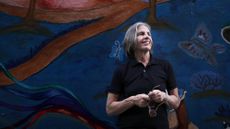
The Week Recommends April is National Poetry Month
By Scott Hocker, The Week US Published 16 April 24

the explainer The gap in care is especially glaring compared to how men are treated
By Theara Coleman, The Week US Published 16 April 24

The Week Recommends The trend for combining classics from two food cultures can result in dishes that are doubly delicious
By The Week UK Published 15 April 24

The Week Recommends The southwestern region pretty much has it all, from beachfront, to port metropolis, to verdant mountainside
By Scott Hocker, The Week US Published 15 April 24

The Week Recommends From 'subversive' textiles to exquisite Flemish drawings, there's something for every art lover
By Adrienne Wyper, The Week UK Published 11 April 24

The Week Recommends A new show from the creator of "Peaky Blinders," Colin Farrell as a neo-noir detective, and more
By Anya Jaremko-Greenwold, The Week US Published 11 April 24

The Week Recommends Foot hammocks and facial sprays add comfort to long flights
By Catherine Garcia, The Week US Published 10 April 24
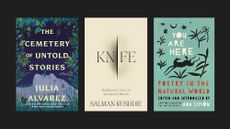
the week recommends A poetry collection curated by the U.S. Poet Laureate, another adult novel from Julia Alvarez and more
By Theara Coleman, The Week US Published 9 April 24

the week recommends An 'unsalvageable' disaster that 'squanders the talents of all involved'
By The Week UK Published 8 April 24
- Contact Future's experts
- Terms and Conditions
- Privacy Policy
- Cookie Policy
- Advertise With Us
The Week is part of Future plc, an international media group and leading digital publisher. Visit our corporate site . © Future US, Inc. Full 7th Floor, 130 West 42nd Street, New York, NY 10036.
We've detected unusual activity from your computer network
To continue, please click the box below to let us know you're not a robot.
Why did this happen?
Please make sure your browser supports JavaScript and cookies and that you are not blocking them from loading. For more information you can review our Terms of Service and Cookie Policy .
For inquiries related to this message please contact our support team and provide the reference ID below.

IMAGES
VIDEO
COMMENTS
And in a 2010 study, Columbia Business School professor Adam Galinsky found that travel "increases awareness of underlying connections and associations" with other cultures. While self-defined ...
Especially since the pandemic, Mr. Sweeting said, people are looking for "experiences that help them change the way they see the world.". Indigenous-owned and -led tourism experiences — a ...
77. "You cannot counterfeit culture," said John De Fries (above), the president and chief executive of the Hawaii Tourism Authority, when discussing the creation of authentic cultural ...
She likes to travel slowly, discover underrated countries/regions, and of course, learn about cultures. She has been traveling the world and creating travel content since 2016. With a degree in tourism management and a passion for travel and cultures, she wants to tell stories that inspire her readers and help them travel more consciously.
The latest travel news, guides, vacation tips and photography of the best places to visit around the world. ... Rich in culture and history, the city is an antidote to the wall-to-wall all ...
Culture and tourism have always been inextricably linked. Cultural sights, attractions and events provide an important motivation for travel, and travel in itself generates culture. But it is only in recent decades that the link between culture and tourism has been more explicitly identified as a specific form of consumption: cultural tourism.
Carolin Lusby. When we chose the theme for this special issue: "Benefits and threats of travel and tourism in a globalized context", no one foresaw how current and appropriate this topic would be. Indeed, due to the global nature of our interconnected world, a virus abruptly changed the industry and life as we know it globally.
Discover exciting world events, luxury travel deals, safety tips, and more. View the latest international travel news and information at T+L.
Louis Mandylor: Growing Up Greek in Melbourne, Australia. By Janna Graber. 1 2 3 … 15. World travel opens our minds and broadens our worldviews. We've collected the best travel articles on rewarding cultural travel experiences around the world.
The United Nations celebrates World Day for Cultural Diversity for Dialogue and Development on 21 May. Recognizing the importance of bridging the gap between cultures and deepening our understanding of the values of cultural diversity — especially in the context of travel and tourism — we're excited to share this article about recognizing and appreciating cultural differences.
This webpage provides UN Tourism resources aimed at strengthening the dialogue between tourism and culture and an informed decision-making in the sphere of cultural tourism. It also promotes the exchange of good practices showcasing inclusive management systems and innovative cultural tourism experiences.. About Cultural Tourism. According to the definition adopted by the UN Tourism General ...
Vision | An independent travel & culture publication focusing on a different, inspiring city for each issue. Articles That Inspire Us | Uzbekistan: Water In The Desert, Havana: The Mondays Club. Boat Magazine tells untold stories about cities all over the world, specifically from the perspective of locals. The publication is unique in that, for each issue of print, the staff physically ...
Travel entails wishful thinking. It demands a leap of faith, and of imagination, to board a plane for some faraway land, hoping, wishing, for a taste of the ineffable. Travel is one of the few ...
Get the latest Travel & Culture stories from Smithsonian magazine in your inbox. By checking this box, I agree to receive other information from the Smithsonian, including relevant content and ...
Culture plays a significant role in travel and tourism. It influences our travel choices, shapes our experiences, and contributes to the economic and social development of destinations. By embracing cultural diversity, practicing responsible tourism, and fostering cultural exchange, we can create a more enriching and sustainable travel ...
Photo by Jesús Alvarado on Unsplash. Traveling can open our minds to new experiences and perspectives, greatly increasing our cultural understanding. By immersing ourselves in different cultures ...
Journal metrics Editorial board. Journal of Tourism and Cultural Change ( JTCC ) is a peer-reviewed, transdisciplinary and transnational journal. It focuses on critically examining the relationships, tensions, representations, conflicts and possibilities that exist between tourism/travel and culture/cultures in an increasingly complex global ...
November 30, 2023 09:50 AM. ·. Pat Tompkins. Books. 7 UNESCO Cities of Literature Every Bookworm Should Visit. November 27, 2023 11:06 AM. ·. Devorah Lev-Tov. Learn about art and culture around the world, and get inspired for your next travel adventure.
The Flight Journey. Once you've braved the airport's hustle and bustle, you'll find yourself cocooned in your airplane seat, greeted by the hum of engines preparing for take-off. The journey ahead is laced with anticipation. Your eyes wander to the window; beneath a sea of clouds awaits an adventure unknown.
Travel + Leisure is travelers' best resource for trip ideas, hotel picks, flight sales, city guides, and travel tips from the experts.
The United States accounted for nearly 30 percent of the global wellness tourism market in 2020, and the sector is expected to grow to $919 billion by 2022 from $735.8 billion in 2020, according ...
Our Local Insiders aren't your average headset-wearing, clipboard-wielding tour guides. They are more like trusted friends with endless local knowledge of the destination they call home, and a passion for immersing others in their culture. They won't just give you the lowdown on the must-see sights; they'll also steer you away from the ...
According to an Abta report, 16% of travellers went on holiday by themselves in the year to August 2023, compared to 11% during the previous year, said Travel Weekly. In the 35-44 age group, the ...
Article continues below this ad So whether it's a typical tourist trap or Buc-ee's, word of mouth and online hype could ultimately be what brings people through the door. More Culture
April 15, 2024 at 3:00 PM PDT. Listen. 5:20. Boeing Co. will recommend that operators of its 787 Dreamliner inspect a nose component that helps maintain cabin pressure, a consequence of the plane ...